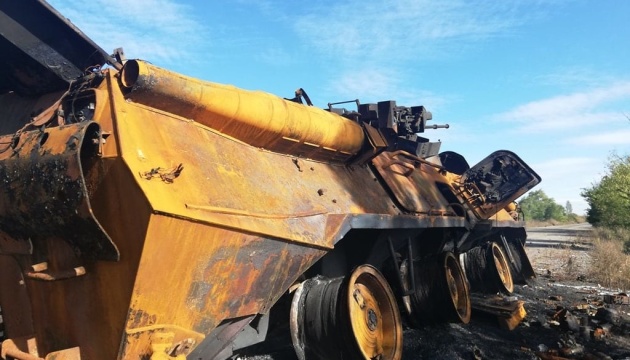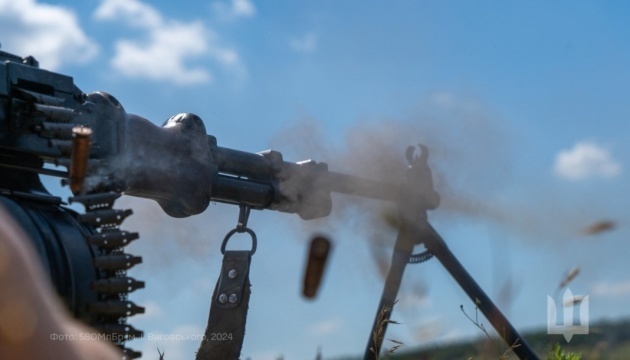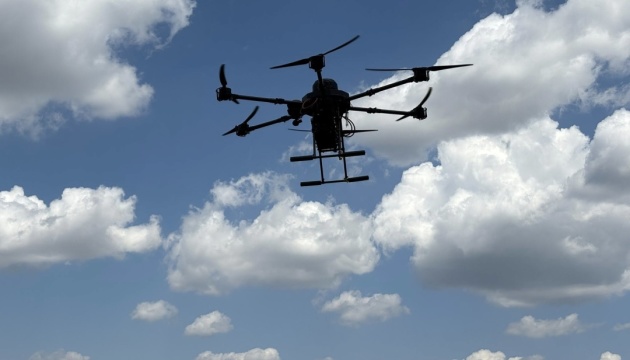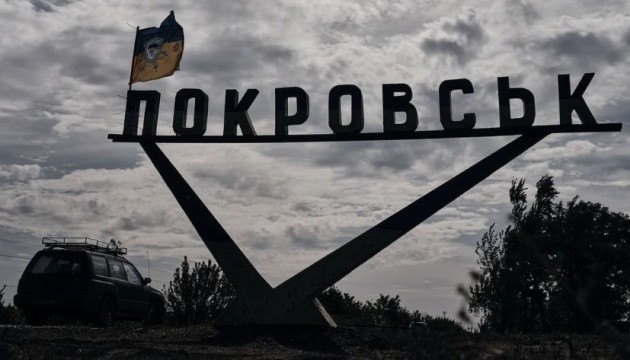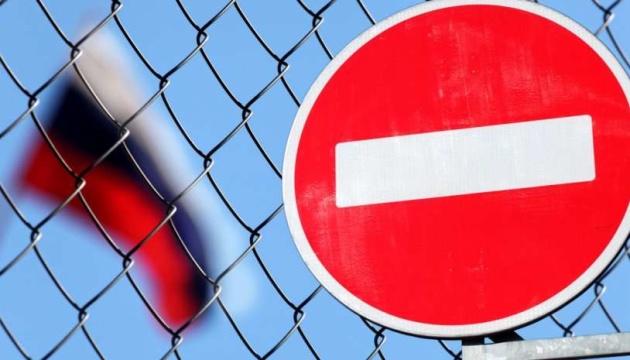UN Secretary-General's office calls for immediate ceasefire ahead of Alaska summit


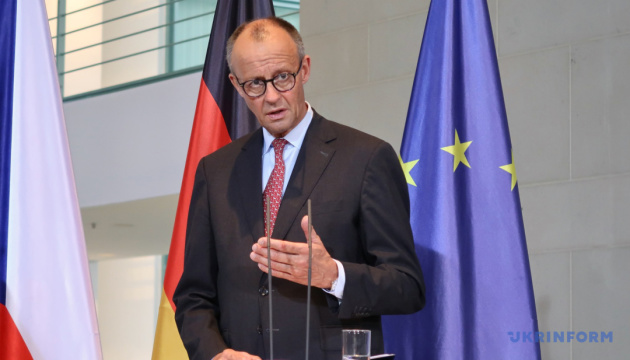
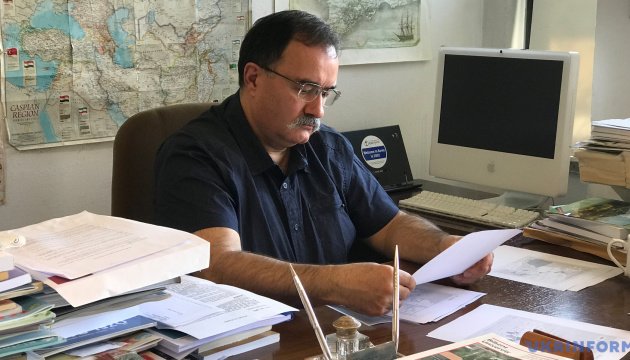
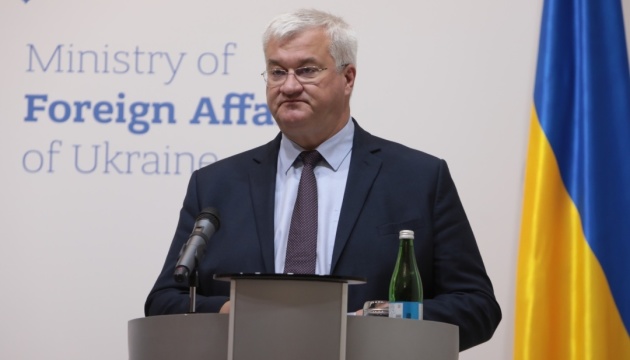
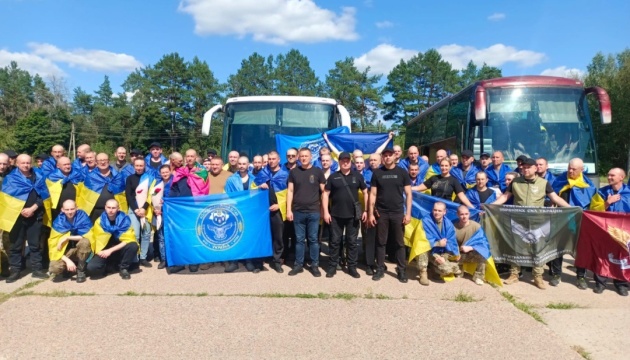
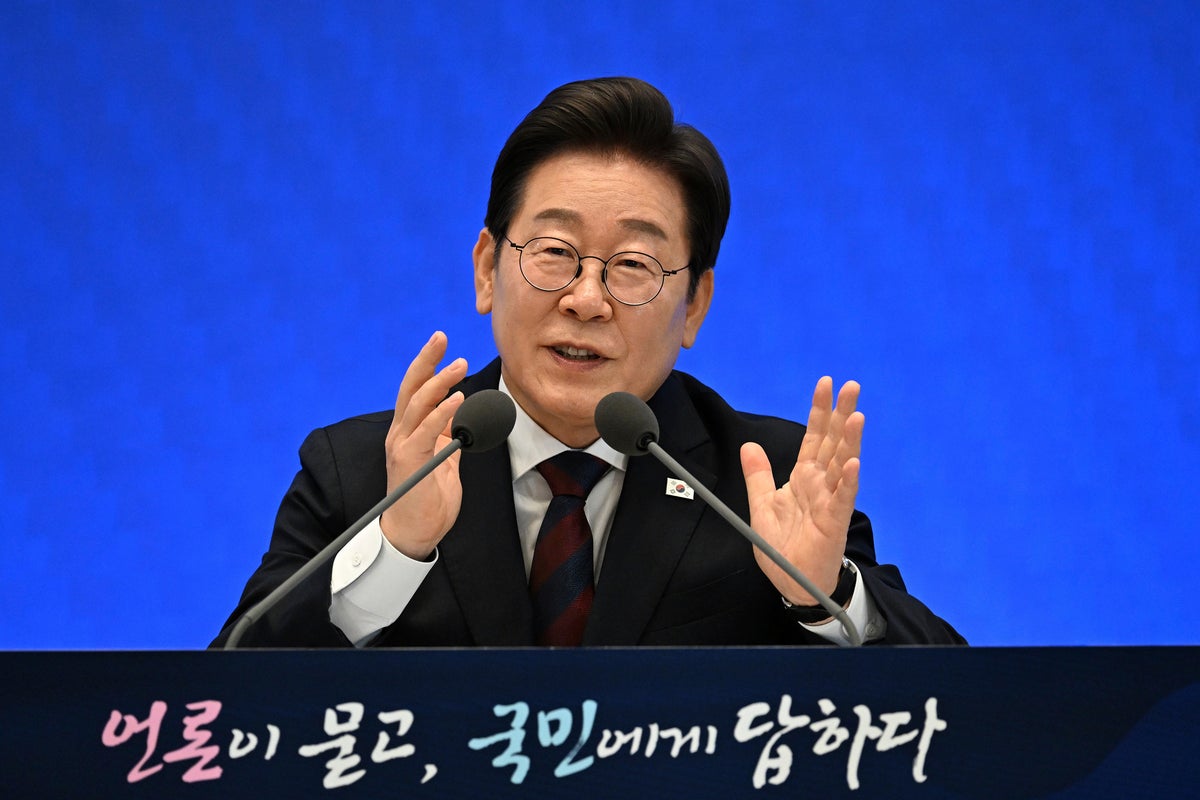
© ASSOCIATED PRESS
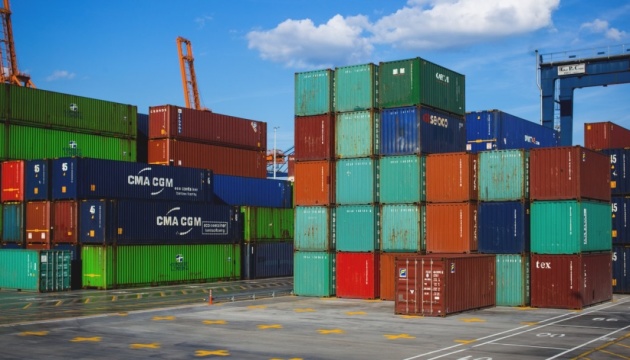
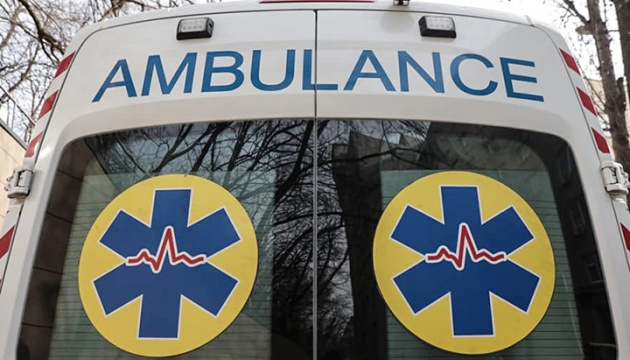

Sir Tony Radakin stressed that ‘Russia is weak’ and that Nato allies needed to demonstrate confidence

© PA
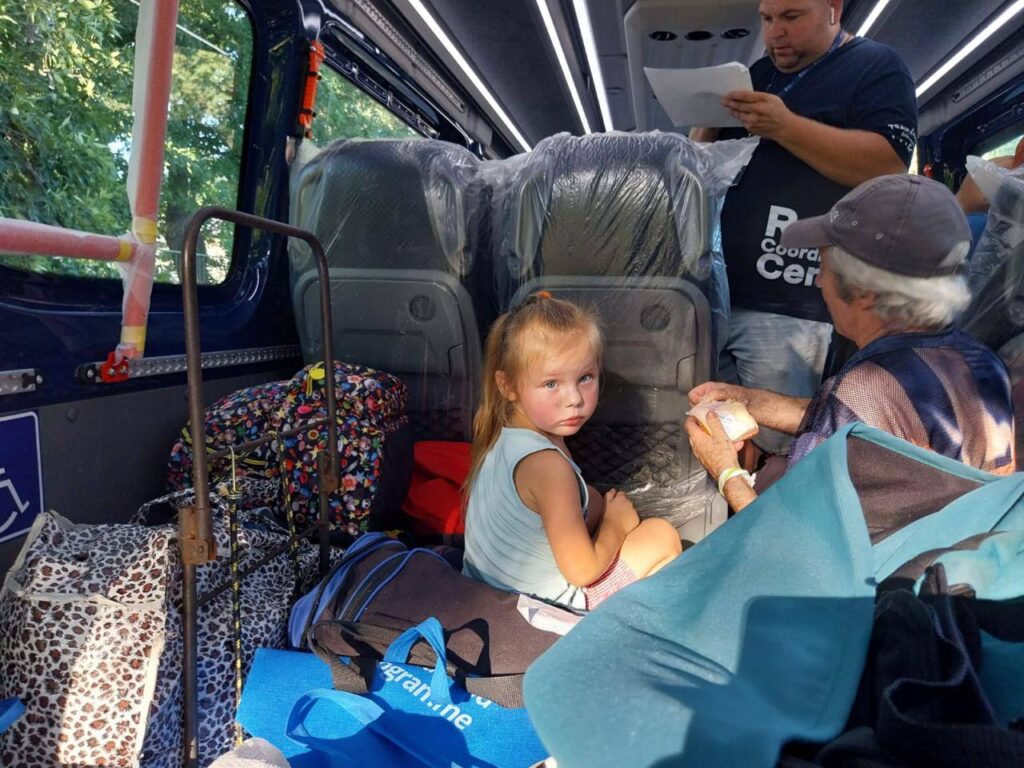
Authorities in Ukraine’s Donetsk Oblast have expanded the mandatory evacuation zone for families with children, adding five new settlements due to intensifying Russian attacks. The decision was announced by Vadym Filashkin, head of the Donetsk Regional Military Administration (RMA), on 14 August.
Druzhkivka, an industrial city of strategic importance, lies about 80 km northeast of Donetsk City and has remained under Ukrainian control since 2014. Once home to nearly 54,000 residents, its population has dropped sharply due to displacement. Its position along key transport routes makes it a vital defensive and logistical hub.
The new mandate covers Druzhkivka, Andriivka, Varvarivka, Novoandriivka, and Rohanske in the Andriivka community, where about 1,879 children currently live.
The evacuation decision followed a meeting of the regional commission on technogenic and environmental safety and emergency situations. Filashkin cited relentless Russian shelling—around 3,000 strikes daily—and urged parents to act:
“Take care of your loved ones — your children. Evacuate in time. Evacuate while it is still possible. Protect your loved ones and do not put them in danger.”
Children will be evacuated only with parents or legal guardians, using a coordinated process involving regional authorities, law enforcement, and local administrations.
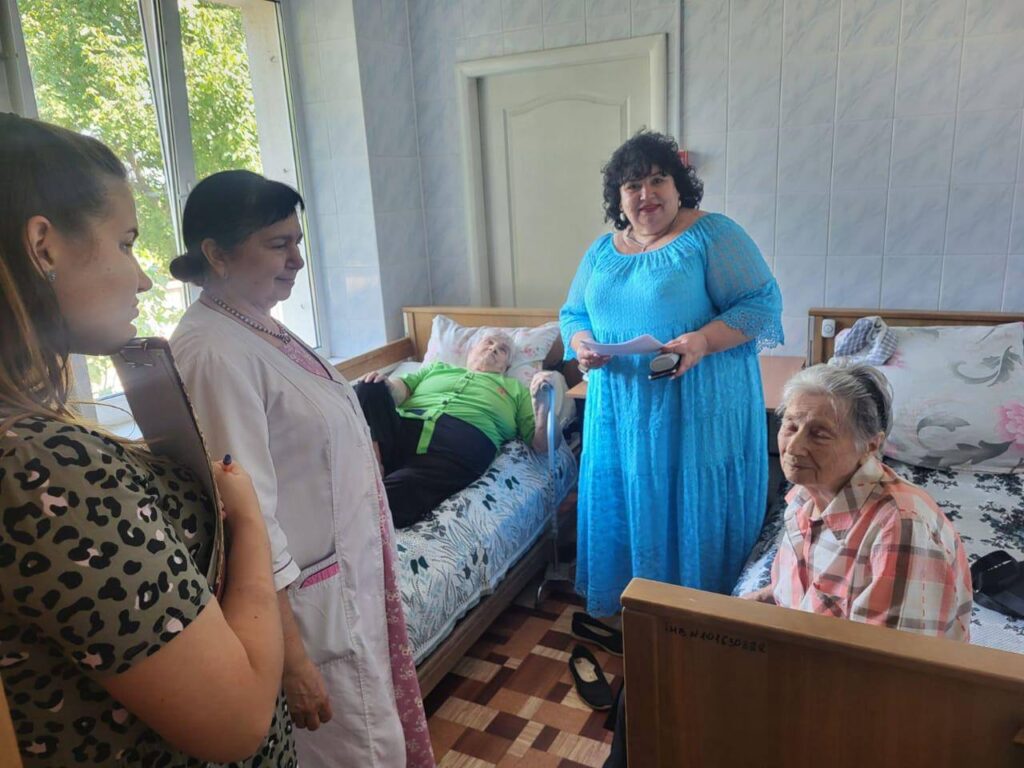
Recent battlefield developments have amplified the urgency. Russian forces achieved a narrow but significant breakthrough north of Pokrovsk, advancing up to 17 km and seizing positions threatening Ukrainian supply lines. Another push near Dobropillia reached the Dobropillia–Kramatorsk highway, a key route for military logistics.
While Ukrainian commanders report stabilizing the front with reinforcements, analysts warn these advances could shift the strategic balance and increase risks for nearby civilian areas, including Druzhkivka.
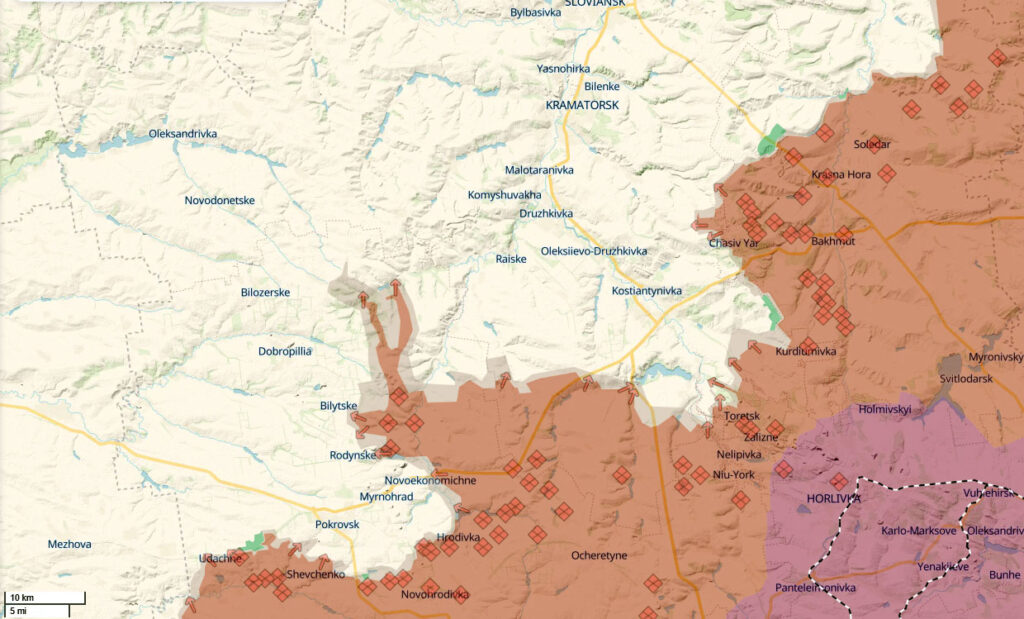
Mandatory evacuations began in March 2023 in Bakhmut during heavy fighting. Since then, similar operations have taken place in Kryvorizka, Dobropilska, Druzhkivska, Lymanska, and Bilozerska communities as the front line has approached.
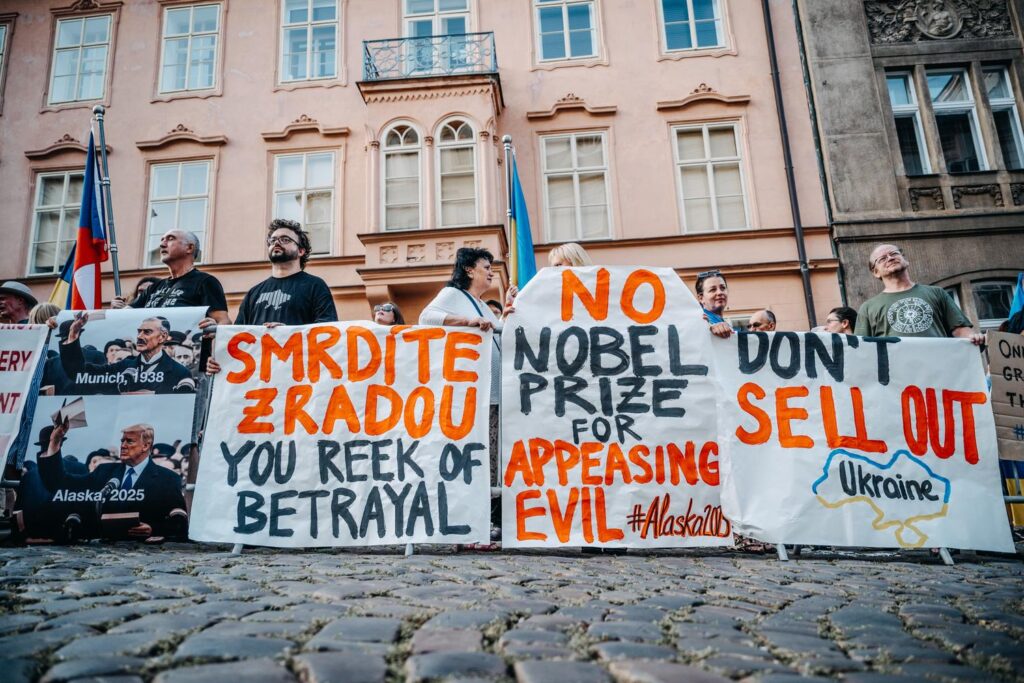
When Donald Trump and Vladimir Putin meet in Alaska this Friday, the headlines will focus on the show: a US president hosting the Russian leader in a state once sold by the Russian Empire, with Ukraine’s fate hanging in the balance. But what’s invisible to many is a fundamental problem. The two men are not even negotiating the same war.
Trump and his advisers frame the war as a territorial dispute.
In Trump’s mind, ending the war is a matter of finding the right chunk of land to trade, a deal that can be signed quickly, sold to voters, and wrapped up before the next election cycle.
Putin’s view is entirely different. For him, this war is not about lines on a map. It is about the structure of Europe’s security order. His core demand, repeated for more than a decade, is a legally binding halt to NATO expansion, not just for Ukraine, but as a principle. That means rewriting the post–Cold War rules so that Moscow has a permanent veto over the alliances its neighbors may join.
It is, in effect, a constitutional rewrite of Europe’s security system.
But Putin’s demands go far beyond strategic reordering. According to Russian officials, Moscow seeks Ukraine’s complete “demilitarization,” “denazification”—Putin’s euphemism for regime change—and permanent “neutrality” barring any Western security guarantees.
Russia also wants all sanctions lifted and NATO forces rolled back from Eastern Europe entirely.
In other words, Putin is not negotiating over Ukrainian territory. He is negotiating over whether Ukraine will continue to exist as an independent state.
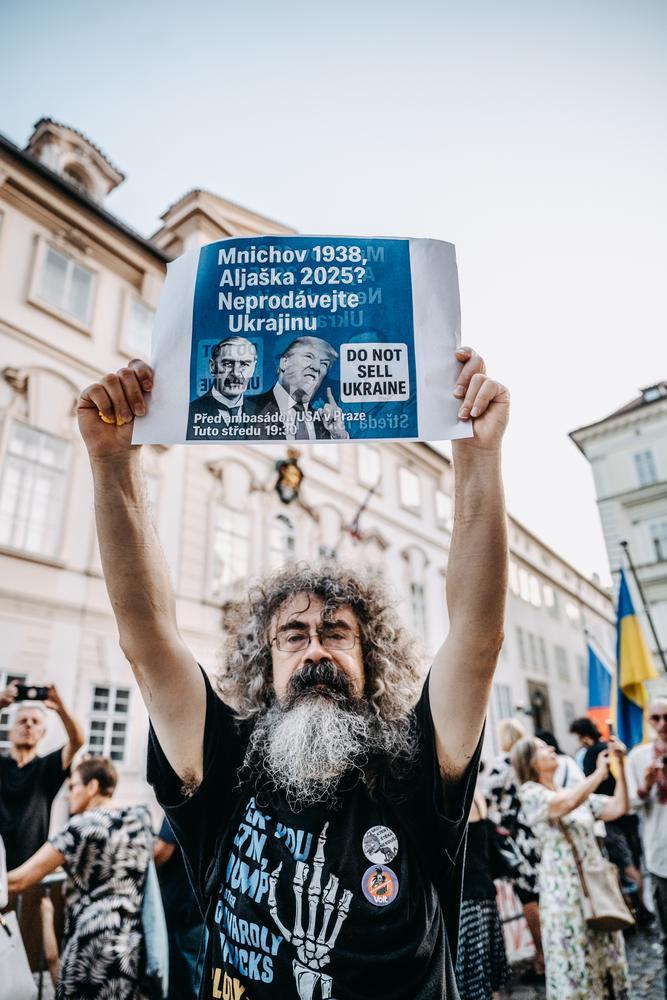
This fundamental mismatch leaves Ukraine in an impossible position. Trump is willing to trade away frozen conflict lines, delayed NATO membership, and limited sanctions relief. But Ukraine needs what Putin refuses to give: genuine security guarantees, territorial integrity, and the sovereign right to choose its own alliances.
For Ukraine, accepting Putin’s terms would mean national suicide disguised as negotiation.
These are not positions Ukraine can compromise on—they are requirements for survival as an independent nation. Yet they are precisely what Trump’s deal-making approach treats as negotiable.
There is no shortage of historical warnings about what happens when talks are built on such mismatches. Land swaps have been tried before as a way to paper over deeper disputes.
In each case, the failure came from mistaking a strategic conflict for a cartographic one.
There is a deeper risk that analysts have largely overlooked: Trump is negotiating with his own misunderstanding of Putin’s objectives. Because he believes the dispute can be solved by trading territory, he will interpret any territorial discussion as progress.
Putin, meanwhile, will see territorial concessions only as a means to secure the larger prize of a rewritten security order.
This misunderstanding becomes Putin’s greatest asset. Russian analysts describe Trump’s dealmaking approach as a “can’t-lose proposition” for Moscow. Putin can appear reasonable and open to compromise while presenting terms designed to eliminate Ukrainian independence.
Even if Trump rejects specific demands, Putin achieves his goal of being treated as Ukraine’s equal in determining the country’s future.
Trump and Putin will leave Alaska believing they have moved closer to a deal, but they will be moving along two separate tracks that never meet.
If this were merely a matter of clashing goals, careful preparation could at least surface the differences and test for overlap. But here too, the asymmetry is visible. Putin arrives in Alaska with a tightly controlled plan, informed by months of private discussions with his closest advisers, and with clear red lines. Trump arrives without a detailed framework.
Successful summits rarely happen spontaneously.
Alaska has none of this. The meeting was triggered by a visit from Steve Witkoff, a real estate developer turned envoy, who came back from Moscow with little more than a handshake agreement to meet.
That imbalance gives Putin the advantage. He can use the summit to appear open and constructive while presenting terms designed to lock in strategic gains.
Even if Trump refuses those terms, Putin will have succeeded in demonstrating to his domestic audience, and to wavering countries in the Global South, that Russia is negotiating directly with Washington, sidelining Kyiv.
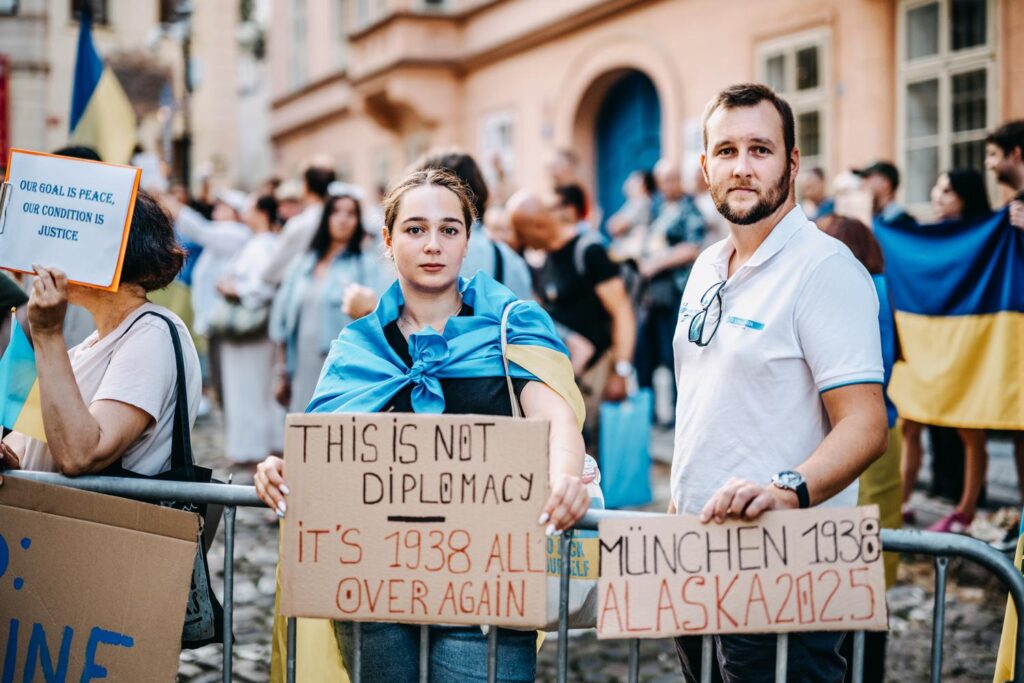
Time itself favors Putin. Trump is thinking in months, hoping for a quick foreign policy win before the 2026 midterms.
Putin thinks in decades. His inner circle, according to Russian sources, has told him that Ukrainian resistance will collapse within months if Russia maintains military pressure.
Even a temporary ceasefire would allow his forces to regroup, while sanctions fatigue erodes Western unity.
This is why a meeting that produces no concrete concessions from Moscow can still be useful to both men, but deeply damaging to Ukraine.
The real danger of Alaska is not that it produces a signed surrender. The danger is that it produces the illusion of progress.
Then there is Alaska itself. Meeting on American soil might seem like a show of strength from Trump, but to Putin, it means something else. Alaska was once Russian territory. Hosting the summit there sends an unintended message: that borders are temporary and land can be transferred through negotiation. In a war where Russia’s central claim is that borders can be rewritten by force, this is a gift.
Diplomats understand the power of location. In 2010, Serbia and Kosovo’s EU-sponsored talks were held in Brussels precisely to avoid symbolic claims to sovereignty. Choosing Alaska to discuss Ukraine’s future undermines the very principle the US claims to defend: that states have the right to keep their internationally recognized borders.
The real danger of Alaska is not that it produces a signed surrender. The danger is that it produces the illusion of progress.
Trump could emerge declaring the talks a first step toward peace, while Putin uses the meeting to reinforce his narrative: that Washington, not Kyiv, is the true counterparty in this war, and that Russia’s demands are the baseline for any serious negotiation.
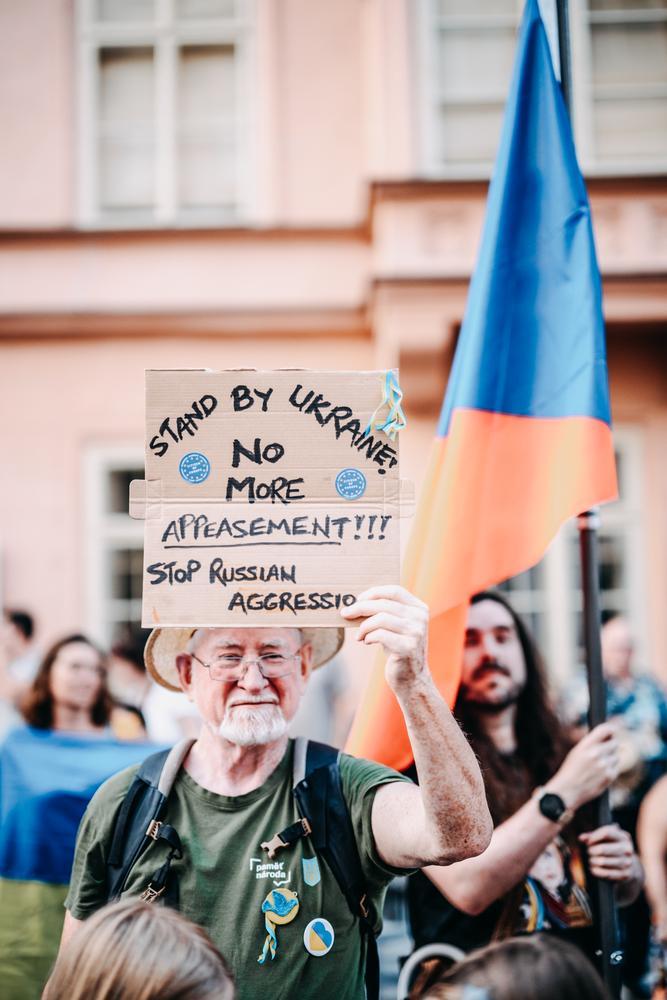
Could Alaska succeed? Only if both leaders arrived with a shared understanding of the core dispute, a set of pre-negotiated principles, and Ukraine’s active participation.
None of those conditions exist.
Without them, the meeting is not a step toward resolution but a set piece in two domestic political dramas: Trump’s need to appear as the great dealmaker, and Putin’s need to appear as the indispensable architect of Europe’s future.
But the stakes are higher than political theater. Trump’s misunderstanding could lead him to pressure Ukraine into accepting a “peace” that eliminates its independence while allowing Putin to claim he negotiated rather than conquered.
The summit’s real risk is that Trump will declare victory while Putin advances his goal of eliminating Ukrainian independence, creating a framework that destroys Ukraine while calling it diplomacy.
That is why the Alaska summit may be remembered not as a turning point toward peace, but as the moment when the West negotiated away a democracy’s right to exist.

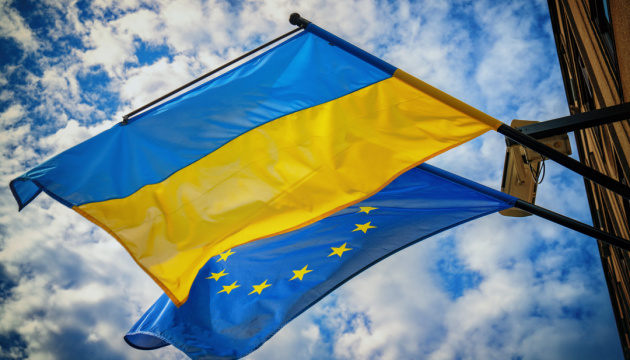
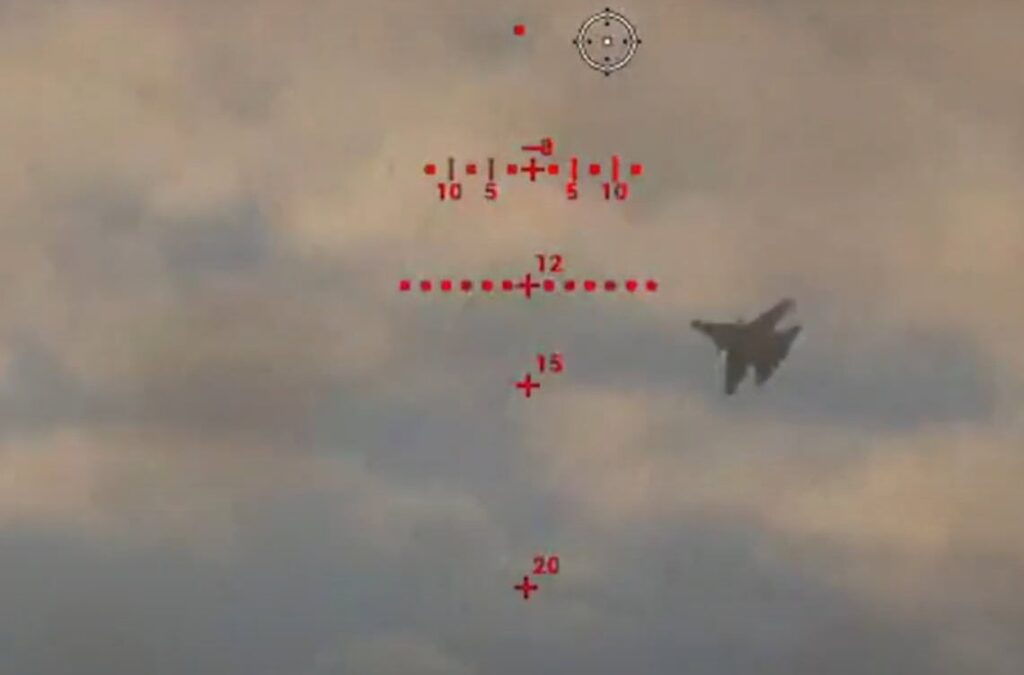
A Russian Su-30SM multirole fighter jet has likely crashed in the Black Sea southeast of Zmiinyi (Snake) Island (Odesa Oblast), according to the Ukrainian Navy.
Naval intelligence intercepted radio communications indicating the loss of contact with the aircraft during a mission. The cause of the incident remains unknown.
Russian forces have launched a search-and-rescue operation; debris has been spotted on the sea surface, but the pilot has not been found.
The Su-30SM is one of the Russian military’s most capable 4th-generation fighters, used for air superiority, long-range patrols, escort missions, radar surveillance, and command-and-control.
FlightGlobal’s 2025 world air forces directory lists 365 Su-27/30/35 fighters in Russian service (exact Su-30SM numbers are not public). Each Su-30SM is estimated to cost between $35 million and $50 million, making every loss a major hit to Russia’s high-value combat fleet.
The aircraft has been used extensively in the war against Ukraine, including for the launch of Kh-31P and Kh-58 anti-radiation missiles aimed at suppressing Ukrainian air defenses.
Ukraine has reported multiple Su-30SM shootdowns and ground destructions since the full-scale invasion began:
The possible downing of another Su-30SM underscores Ukraine’s ability to inflict attrition on Russia’s front-line combat aviation. With high unit costs and a shrinking pool of trained aircrews, each loss erodes Russia’s air combat capability — particularly in contested zones like the Black Sea.

© Copyright 2025 The Associated Press. All rights reserved
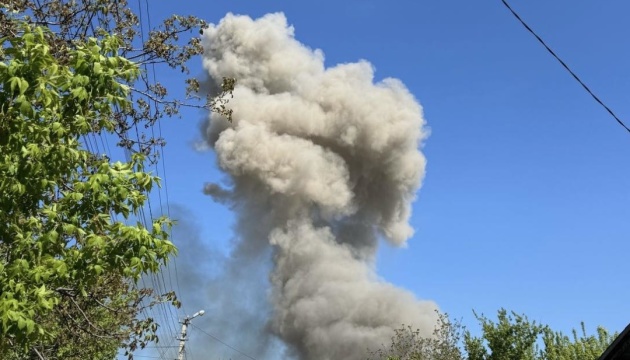
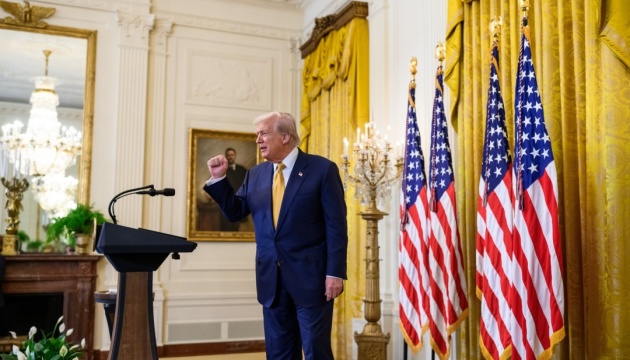
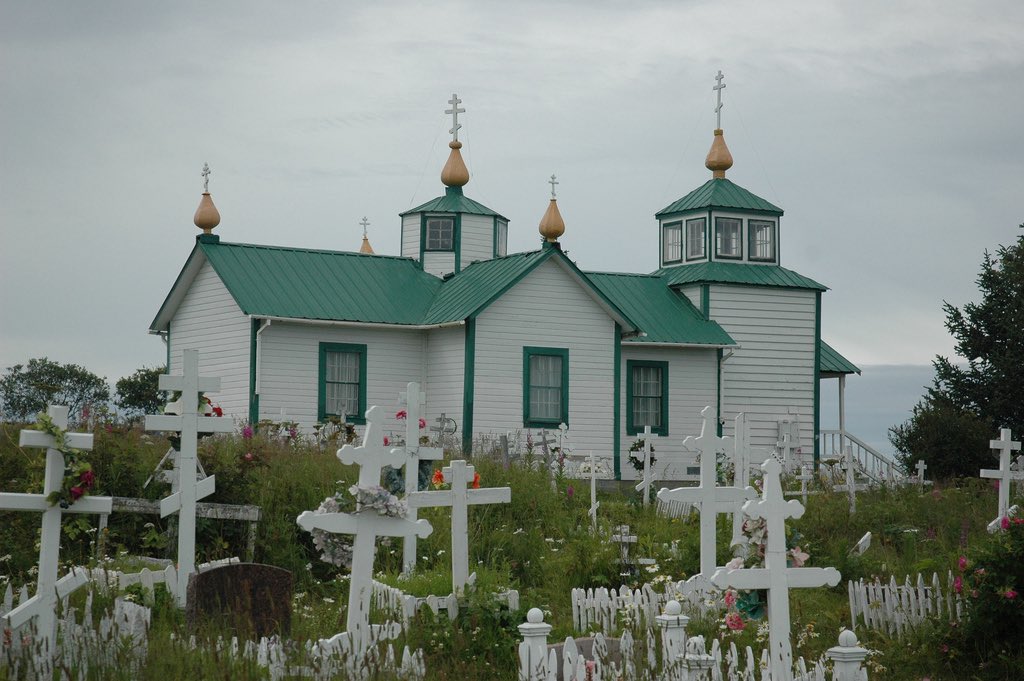
The upcoming summit between US President Trump and Russian President Putin in Anchorage, Alaska, has reignited Russian imperial rhetoric precisely as Moscow seeks to demonstrate its global reach while pressuring Ukraine to cede territory.
The summit venue has brought renewed attention to longstanding Russian territorial claims, with statements resurfacing in which Russian state and media figures suggest the US state belongs to Moscow ahead of Friday’s meeting.
State television propagandist Olga Skabeyeva has referred to the state as “our Alaska” during broadcasts in 2024. The same year, Deputy Security Council Chair Dmitry Medvedev joked on social media about going to war with the US over the territory.
Kremlin negotiator Kirill Dmitriev described Alaska as “an American of Russian origin” during recent summit discussions. State Duma Speaker Vyacheslav Volodin previously warned that Moscow would lay claim to the state if Washington froze Russian assets abroad.
In 2022, Billboards reading “Alaska Is Ours!” appeared in Krasnoyarsk, Siberia.
Alaska was colonized by Russia from 1799 to 1867, and was administered by about 700 Russians across a territory larger than Texas. Russia sold Alaska to the United States in 1867 for $7.2 million following Russia’s defeat in the Crimean War. Nearly all Russian settlers left after the purchase, though Russian Orthodox churches remain throughout the state.
The state’s closest point lies just 3.8 kilometers from Russia across the Bering Strait, between Little Diomede Island (US) and Big Diomede Island (Russia). There are 89 kilometers between the mainlands of the two countries.
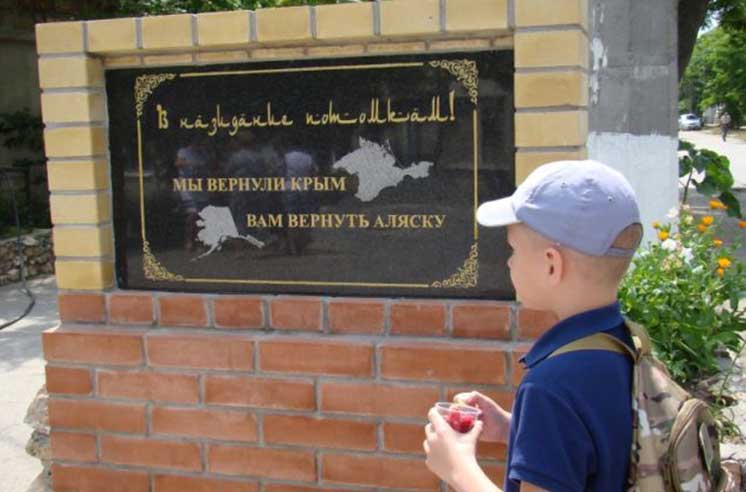
Trump and Putin will meet Friday in Anchorage to discuss ending Russia’s war in Ukraine. Trump has indicated he expects “some land-swapping” in any potential deal, while Putin demands Ukraine abandon NATO aspirations and recognize Russian territorial conquests.
In the press conference about the summit on 11 August, President Trump appeared to slip up, referring to the meeting location as “Russia”.
Ukrainian President Volodymyr Zelenskyy was not initially invited to the summit, though the White House is considering extending an invitation.
The summit will reportedly include discussions of a potential minerals deal, with Trump expected to present resource partnership proposals to Putin during the meeting, according to The Telegraph.
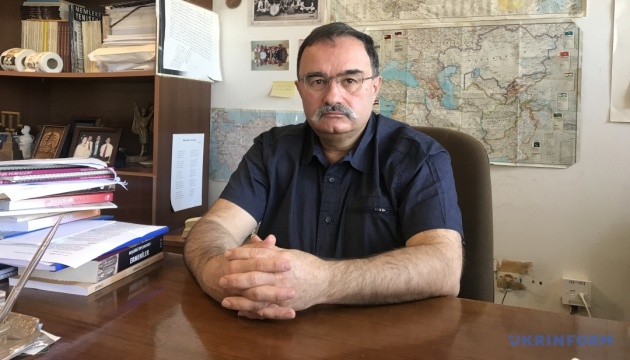
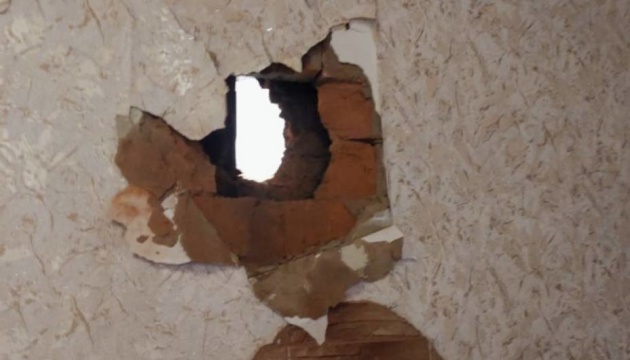
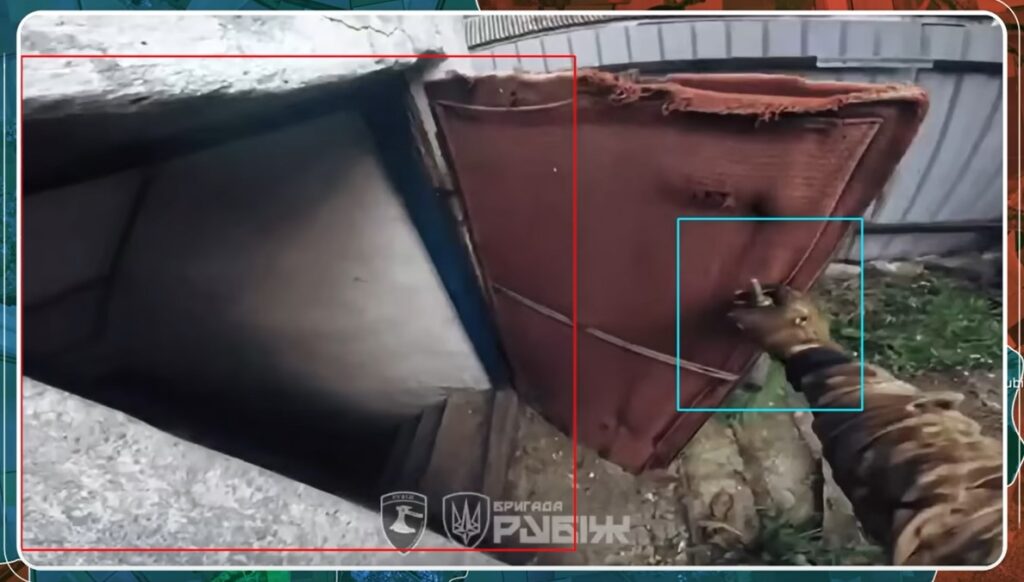
Today, there are important updates from the Pokrovsk direction. Here, on the eastern flank, the Russian forces conducted a massive push to cut off Ukrainian supply lines to Pokrovsk and starve out the defenders. However, Russians quickly got stuck in fortifications that guard the back of the Ukrainian defense line, with intense close-quarters battles breaking out.
In the latest adjustment of their summer offensive, Russian forces are now concentrating their efforts on encircling Pokrovsk from the east. Despite being initially promising, the failed encirclement efforts from the west and unsuccessful infiltration attempts from the south were both successfully pushed back by Ukrainian defenders.
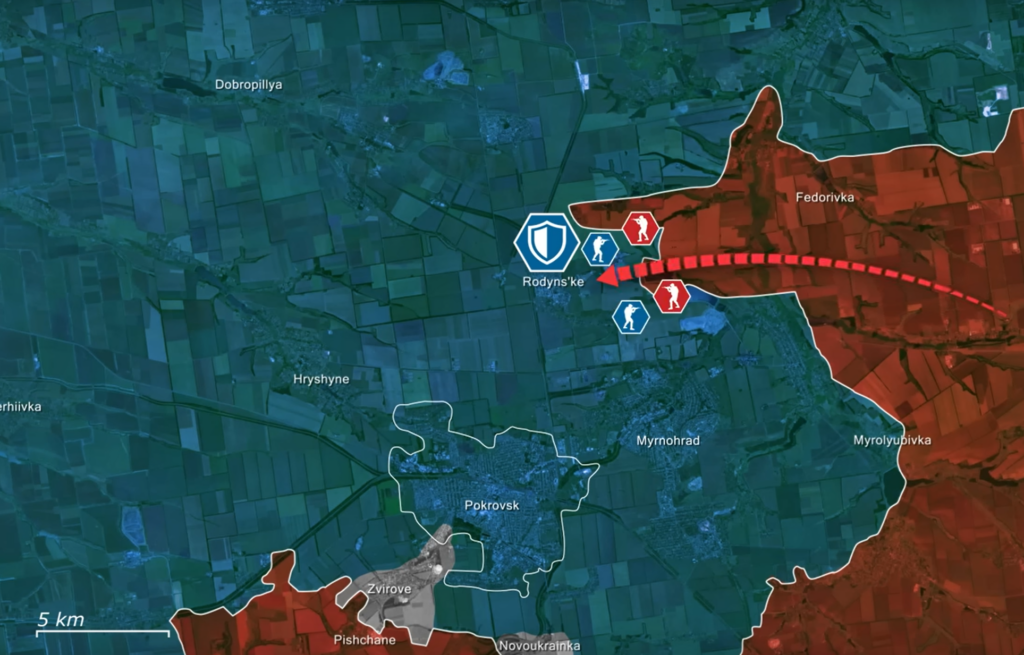
Ukrainians improved their tactical standing, stalling further enemy momentum, which changed Russia’s strategy toward targeting logistics on the western flank. However, the same cannot be said for the eastern flank. After making headway there, Russian forces rapidly shifted their focus to this sector, capitalizing on their momentum to push deeper and reach the strategically vital settlement of Rodynske.
Their objective is now clear: cut supply lines, threaten Pokrovsk and Myrnohrad from behind, and force the Ukrainian defense into a semi-encircled position. Rodynske has emerged as a focal point in Russia’s operational plan due to its position directly behind Pokrovsk and Myrnohrad, which allows it to serve as a logistical and tactical keystone for both towns. Capturing it would open a dangerous axis of advance from the rear, collapsing supply routes and placing additional pressure on Ukrainian units holding the line.
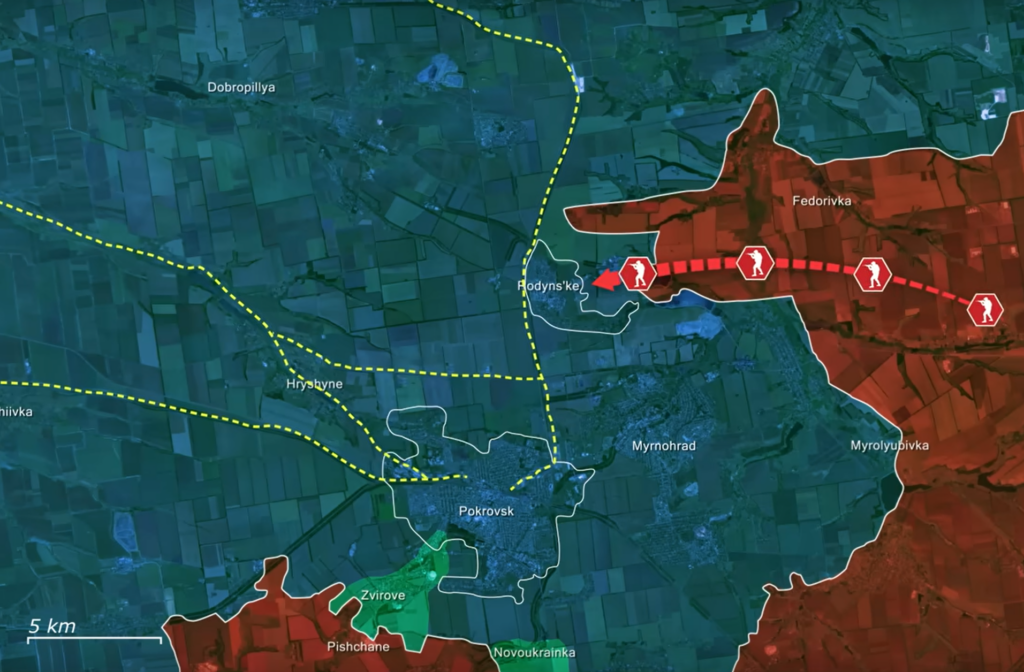
Recognizing this, Russian commanders are pouring reinforcements into the area, prioritizing the capture of the dense urban environment of Rodynske, which would offer both protection for troop concentrations and ideal conditions for the launch of drone operations. If secured, Russian drone teams positioned in Rodynske could launch strikes with ease across a 15 to 25 kilometer radius, hitting key Ukrainian staging areas and logistical hubs.
If we look at the topographic map, we can see that the immediate threat could easily extend west toward Hryshyne, which sits in a lowland and would be vulnerable to attack. Additionally, this would allow the Russians to gain access to the same high ground that Pokrovsk is sitting on and would open up attack routes directly from behind.
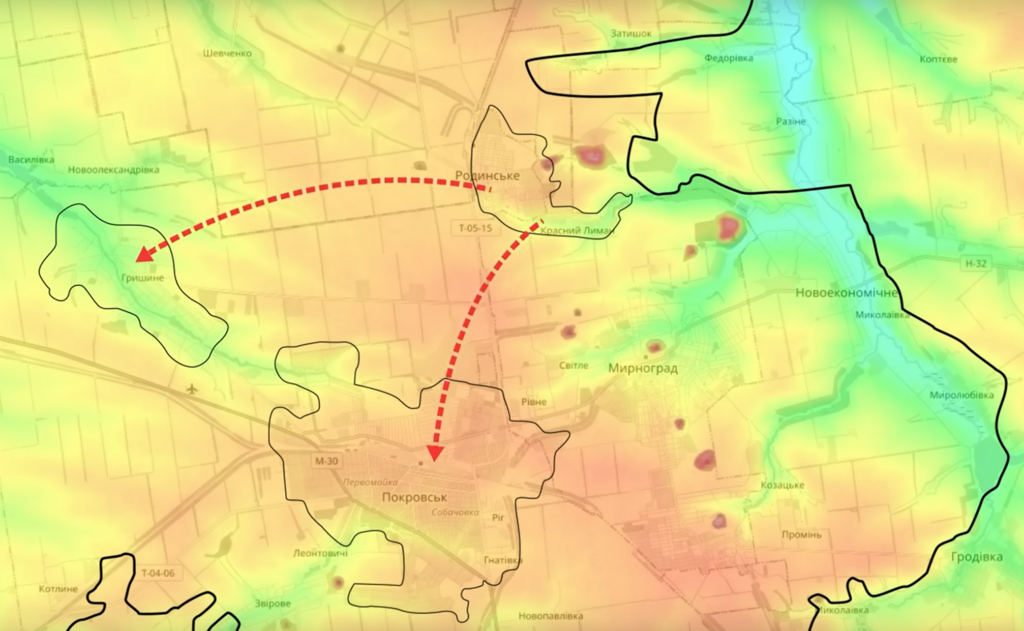
For now, however, the main Russian effort remains squarely focused on breaking Ukrainian resistance in Rodynske. The fierce battle for the settlement has already begun, with high-intensity engagements playing out on its eastern approaches. Geolocated combat footage paints a clear picture of the fighting, as in one clip, a Ukrainian marine fires an AT-4 grenade launcher at point-blank range into an underground cellar where Russian soldiers had holed up in. After the explosion had opened up the underground area, a Vampire hexacopter was then able to drop a heavy mine from above, obliterating the Russian position.

Elsewhere, the Starfall unit of the 14th Operational Brigade of Ukraine’s National Guard is shown operating east of Rodynske, targeting Russian troops hiding near a mine with drone-dropped explosives to stop their advance.
More particularly brutal GoPro footage captures two Ukrainian soldiers responding to signs of an enemy presence. Calm and calculated, they discover two Russian assault troops hiding in a cellar. Speaking fluent Russian, the Ukrainians momentarily confuse the intruders before eliminating them with grenades tossed inside. The same team later clears a nearby house, eliminates the Russian soldiers inside, and seizes a captured assault rifle.
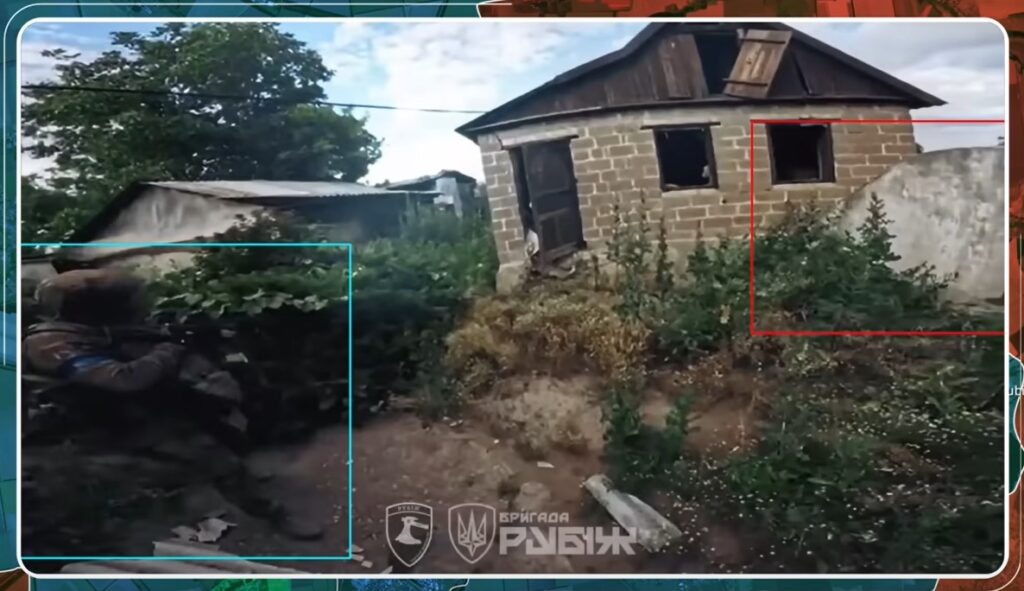
Overall, Pokrovsk remains the hottest section of the frontline and the focal point of Russia’s summer campaign. The Russians are determined to establish a foothold in the paved neighborhoods before the fall rains make any approach on soft ground impossible, and their pivot to the east has already yielded dangerous momentum.
Yet this shift is now being met with fierce Ukrainian resistance centered on Rodynske, quickly growing to be of extreme importance. Its defense is about protecting the entire Pokrovsk–Myrnohrad sector from collapse, as if Rodynske falls, the door to encirclement opens. For now, however, Ukrainian forces are holding, fighting from house to house, and striking back with every tool available. The battle is far from over, but the outcome in Rodynske may well decide the fate of Pokrovsk.
In our regular frontline report, we pair up with the military blogger Reporting from Ukraine to keep you informed about what is happening on the battlefield in the Russo-Ukrainian war.
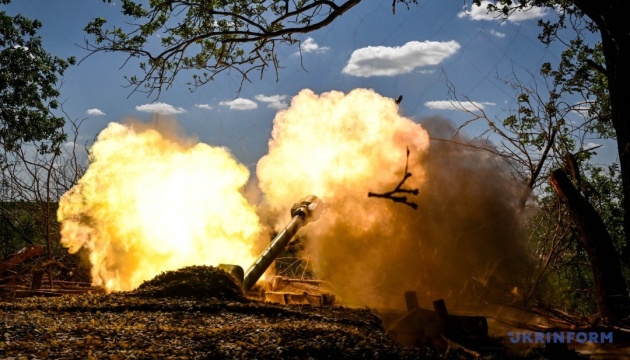
Editorial: When Putin declares victory, as now looks likely, the question of how willing the ‘coalition of the willing’ will be in its continued defence of Ukraine is a crucial one that few seem ready to answer – and one on which Keir Starmer must continue to take a lead

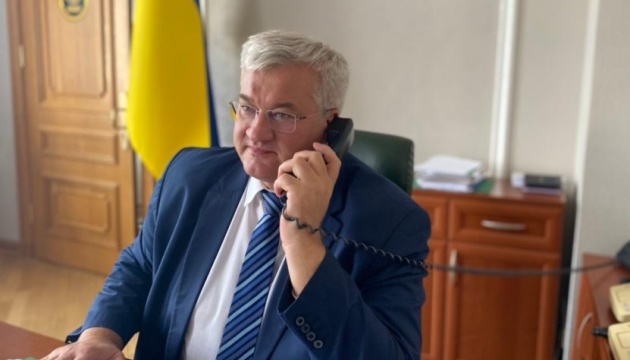
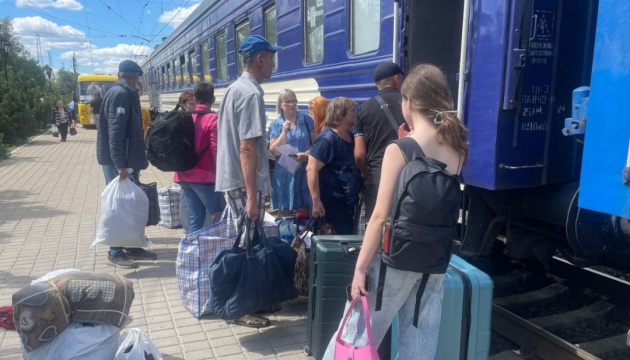
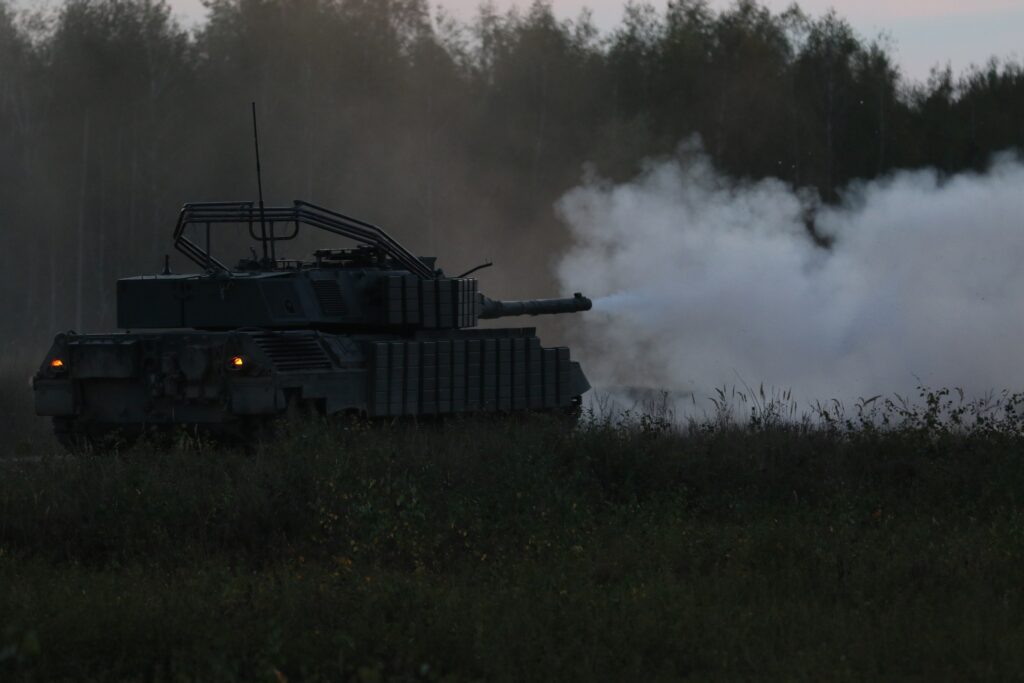
Ukrainian reinforcements are rushing to the Pokrovsk area in an urgent effort to defeat a Russian infiltration that threatens one of two main supply roads into the besieged city in Donetsk Oblast.
The reinforcements include one of Ukraine’s new multi-brigade corps—and at least one Leopard 1A5 tank.
The Ukrainian army’s 508th Separate Repair and Restoration Battalion—which retrieves, repairs and returns armored vehicles—loaded one of the 40-ton, four-person Leopard 1A5 tanks onto a heavy transport truck and hauled the tank into the Pokrovsk sector under the cover of darkness on Wednesday.
“We’ve been a little quiet the last few days,” the battalion stated on social media, “but another Leopard 1A5 with full ammunition … is successfully delivered to one of the hottest places [in the] Pokrovsk direction.”
It’s obvious where the German-made tank wound up: somewhere along the roughly 10-km front stretching from Rodynske in the south to Nove Shakhove in the north. That front, just northeast of Pokrovsk, is the current locus of the fighting after Russian troops slipped past under-manned—or entirely empty—Ukrainian trenches last week and hooked left to threaten Dobropillya, which sits astride the T0515 road threading into Pokrovsk.
Two of the seven Ukrainian brigades that operate the 1980s-vintage—but heavily upgraded and up-armored—Leopard 1A5s are holding the line around Dobropillya: the national guard’s 4th Rubizh Brigade and the army’s 142nd Mechanized Brigade.
Each brigade probably owns a dozen Leopard 1A5s out of 170 that a German-Dutch-Danish consortium has pledged to Ukraine. Around 100 of the tanks have shipped; the Russians have knocked out at least 14 of them. Others have been damaged.
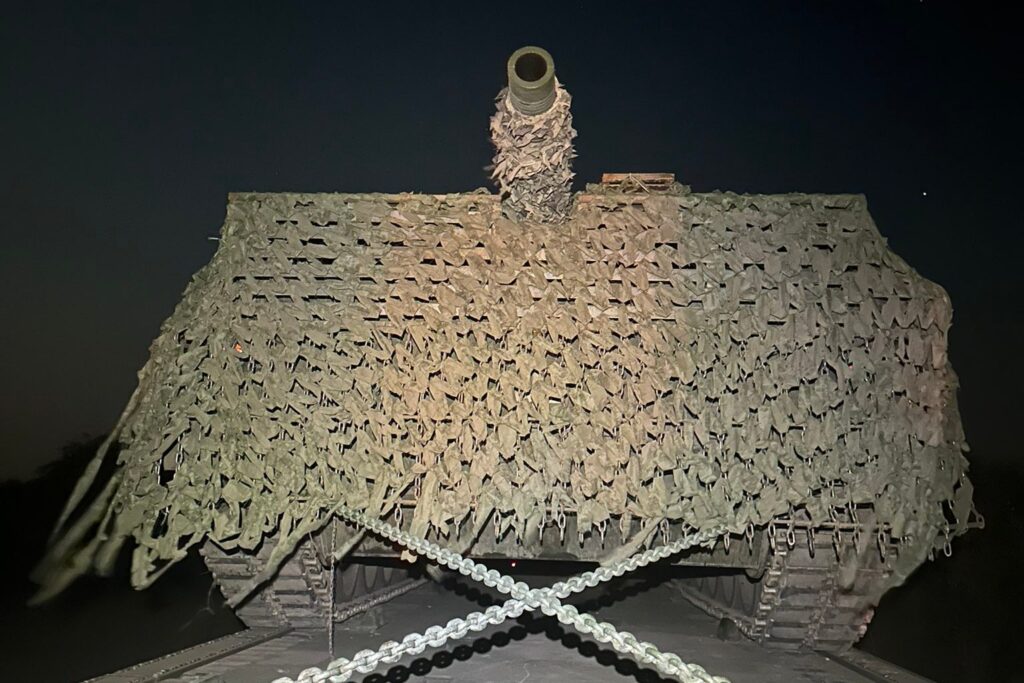
It’s likely the Leopard 1A5 the 508th Separate Repair and Restoration Battalion sneaked into the Pokrovsk area was a damaged tank that the battalion fetched from the front line and fixed up at its workshop before hauling it back to its operator.
After losing around 4,000 tanks in action in the first 42 months of its wider war on Ukraine, Russia has all but ceased deploying heavy armor along the 1,100-km front line. Production of new T-90M tanks, and the restoration of old Cold War T-72s moldering in long-term storage, simply can’t make good all those losses.
Today, the Russians mostly attack on foot or on motorcycles, counting on these hard-to-spot and fast-moving forces to slip through thinly manned Ukrainian trenches and past Ukraine’s ever-present drones. The Ukrainians still use tanks, however, fearlessly rolling the hulking vehicles from their drone-proof dugouts for close fights with infiltrating Russians.
It’s not for no reason that, last month, Ukraine lost more tanks in action than Russia did—a first in this wider war.
Ukrainian Pres. Volodymyr Zelensky insisted the Russian infiltrators threatening Dobropillya marched north and then turned west “only with weapons in their hands.” They’re lightly armed and poorly supplied, potentially making them easy targets for tanks. Assuming, of course, the tanks can shrug off any Russian drones patrolling the Russian salient northeast of Pokrovsk.
There’s a good reason for the Ukrainian tankers to be optimistic. The Leopard 1A5 and Leopard 2A4 tanks that are helping to defend the Pokrovsk sector have proved that, with enough add-on armor, they can survive repeated drone strikes—and keep fighting.

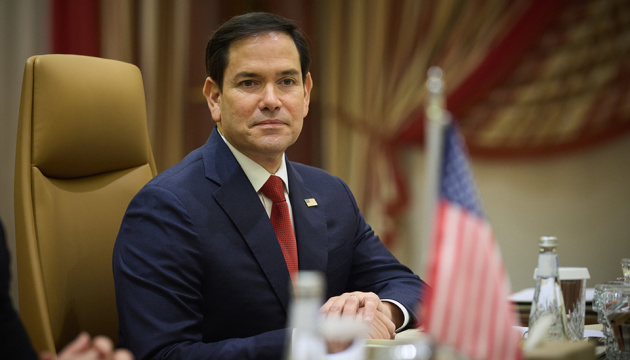
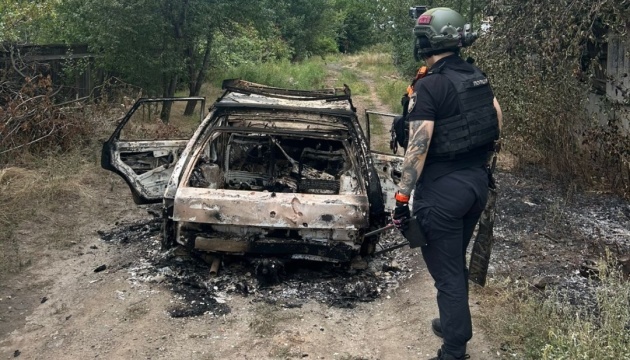
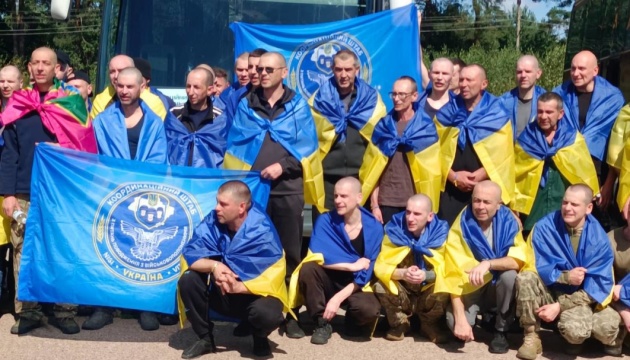
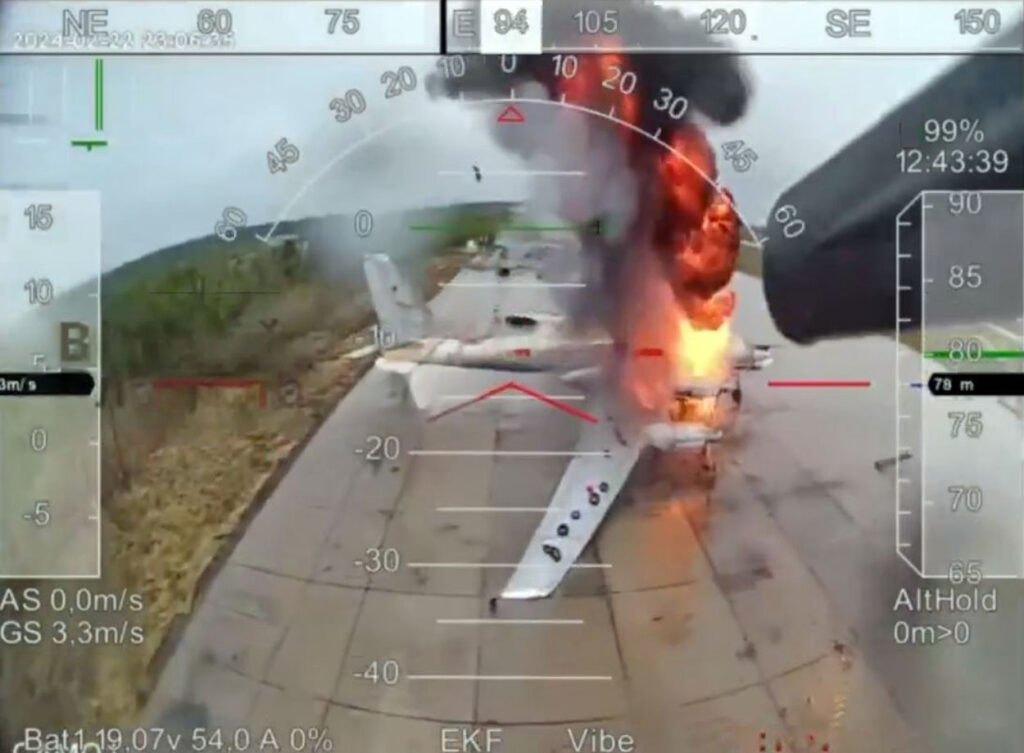
Ukraine’s Security Service head just explained exactly how Ukraine had smuggled attack drones into Russia and hit four military bases simultaneously in their most audacious operation yet.
The 1 June mission—codenamed “Spider Web”— hit 31 and destroyed 21 Russian aircraft worth over $7 billion. That’s roughly a third of Russia’s cruise missile carriers wiped out in a single coordinated strike.
But the real story isn’t the destruction. It’s how Ukrainian intelligence spent 18 months building a fake logistics company inside Russia to pull it off.

SBU chief Vasyl Maliuk revealed the operation’s mechanics in a recent interview. His agents didn’t just sneak across the border—they set up shop in Chelyabinsk, renting offices and warehouses practically next door to the local FSB headquarters.
Why Chelyabinsk? The industrial city over 2000 km from the front line provided perfect cover for a logistics operation. The Ukrainians bought five cargo trucks, hired Russian drivers, and started moving equipment.
The weapon? What Maliuk calls “hunting lodges”—wooden structures mounted on truck beds, equipped with solar panels and EcoFlow batteries to continuously power concealed drones. Russian customs saw camping gear. Inside were 117 combat drones waiting to strike.

The original plan called for a May strike. What went wrong? Russian drinking culture.
“We planned to do this before May 9, but they went on a drinking binge during Easter,” Maliuk explained.
The Ukrainian handlers couldn’t reach their Russian drivers for weeks. “One driver was missing, then another. Then May 1st—their May holidays—and they’re lying around for a week.”
The operation lost an entire month to spring festivities.
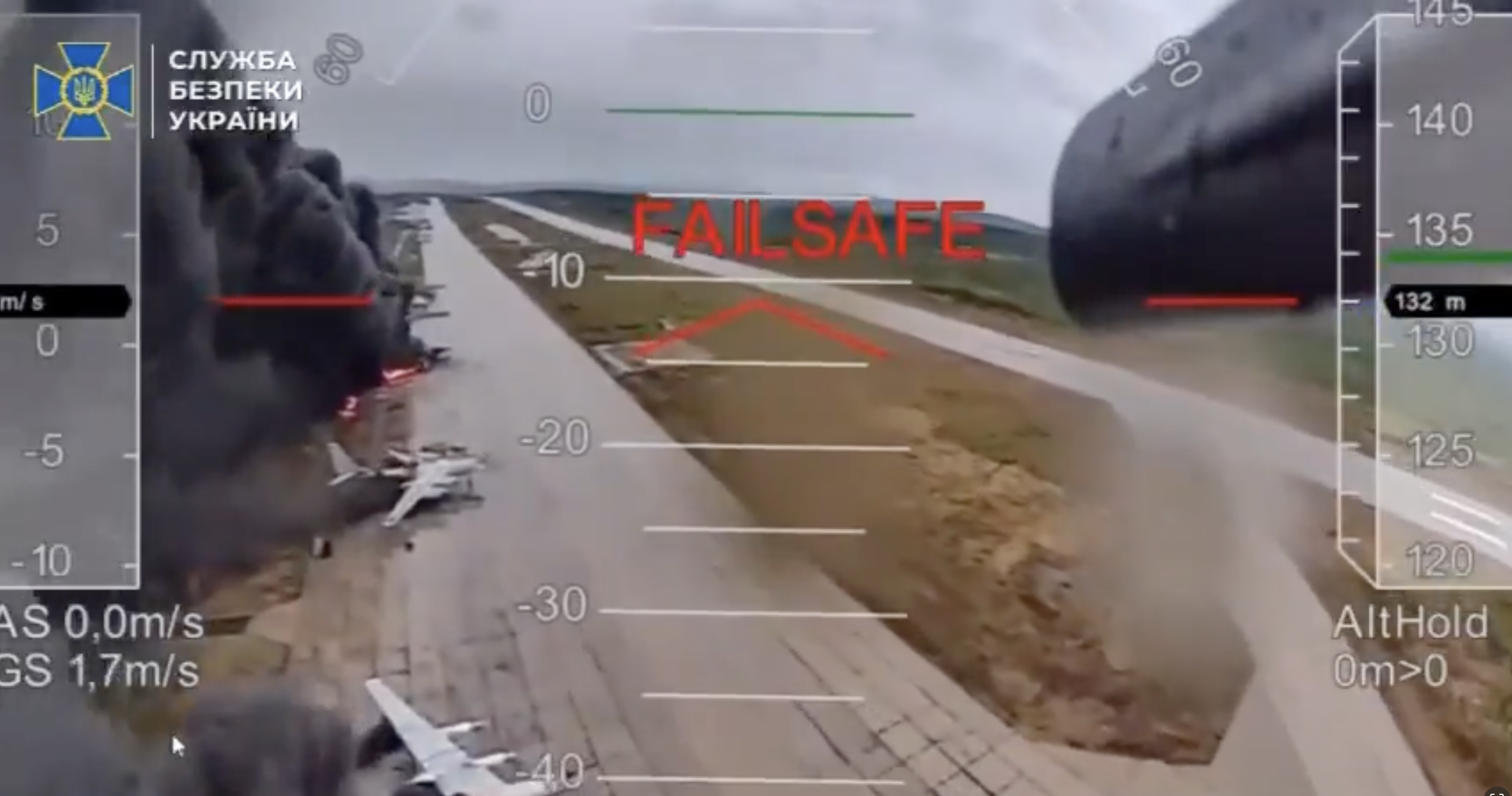
Picture this: Ukrainian agents preparing their weaponized hunting lodges when someone accidentally hits the wrong button. The roof opens. A 63-year-old Russian truck driver sees rows of military drones lined up for combat.
Panic. The field agents called headquarters immediately. “We have an emergency situation. What are we going to do?”
Malyuk’s solution? Instant cover story. Tell the driver these are wildlife surveillance drones used to track animal populations and catch poachers. The 63-year-old knew nothing about modern technology. He bought it. A bonus payment helped seal the deal.
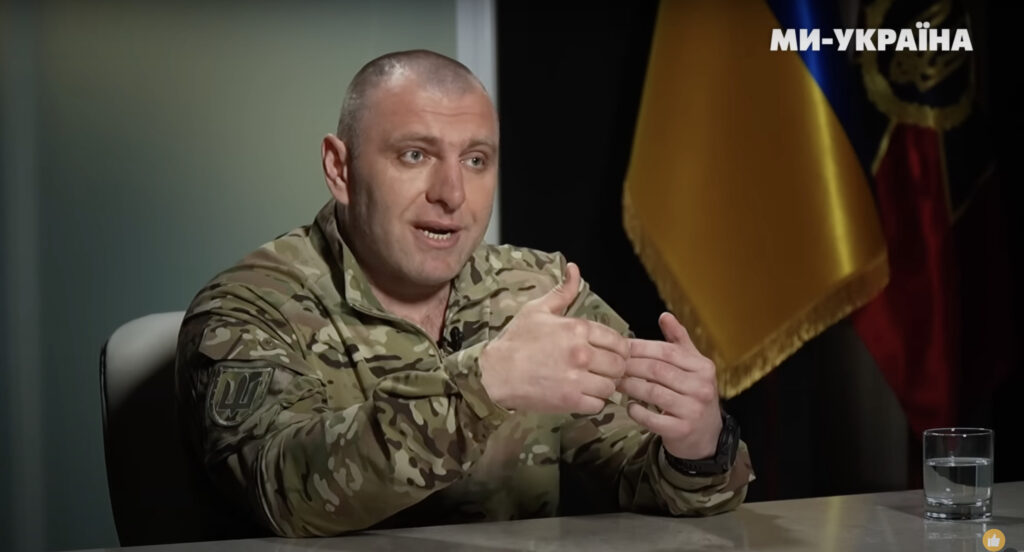
The Russian drivers who transported the drones never knew what they were carrying. They’re now in Russian detention centers, according to Maliuk, facing torture for crimes they didn’t know they were committing.
“In reality, they did nothing illegal and there was no intent in their actions,” he said. “We paid them very generously.”
All Ukrainian operatives who organized the mission have been evacuated from Russia with new identities.

The targets weren’t random. These aircraft form part of Russia’s nuclear triad—the bombers that have been launching cruise missiles at Ukrainian cities and infrastructure throughout the war.
The strike hit A-50 early warning aircraft and Tu-95, Tu-22M3, and Tu-160 strategic bombers across four bases: Belaya, Dyagilevo, Olenya, and Ivanovo. The operation required coordination across three time zones.
At the predetermined moment, the hunting lodge roofs opened remotely. The drones emerged and flew to their targets.
How did Ukrainian intelligence learn to smuggle military equipment past Russian customs? They studied international drug cartels, Maliuk said in the interview.
Russian customs corruption made the mission possible, he believes. His agents had to navigate what he called “seven circles of hell” due to international sanctions, but corrupt officials provided the opening they needed.
Maliuk also noted the parallels between this operation and the 2022 Crimean Bridge attack, where Ukraine used a truck loaded with 21 tons of explosives.
“If you read between the lines and look professionally, I think many noticed certain parallels.”
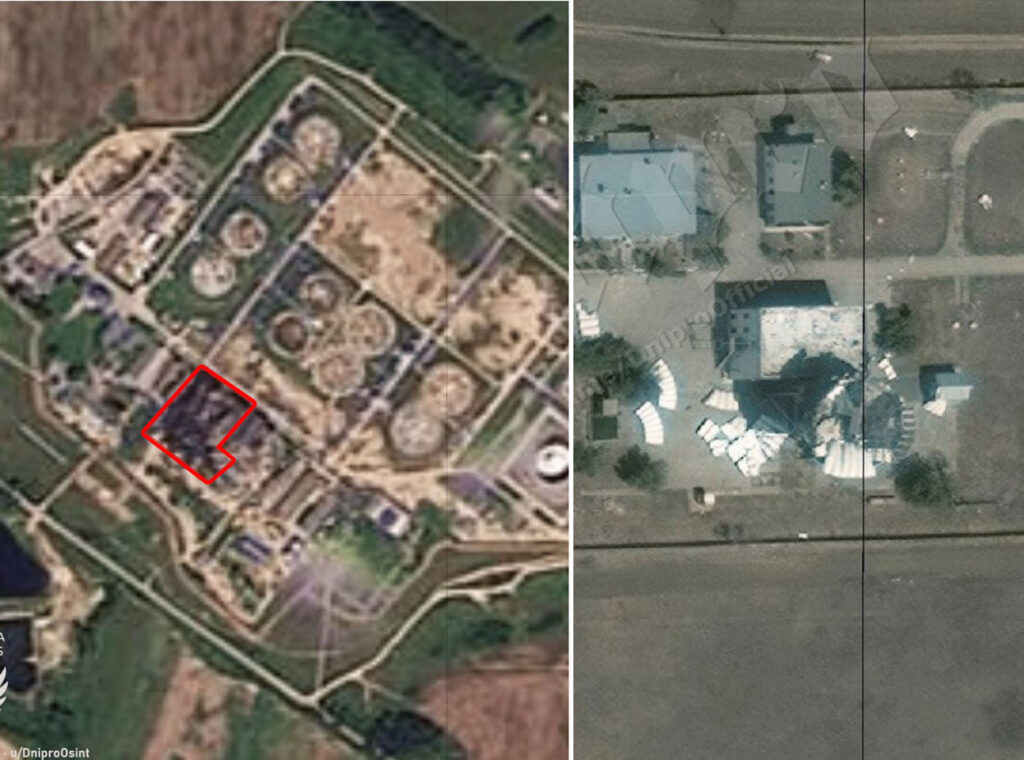
Fresh satellite images have confirmed extensive damage to Russia’s Unecha oil pumping station in Bryansk Oblast and the Skala-M radar complex in occupied Crimea. The confirmation follows earlier reports of Ukrainian strikes on both facilities.
Militarnyi reports that Dnipro Osint published satellite images showing burn scars and destroyed infrastructure at the Unecha oil pumping station in Bryansk oblast. The facility is part of the Druzhba pipeline, which carries Russian crude to European countries. According to the images, the damage is concentrated near the booster pump station, where a large fire left the site unable to operate.
Two days ago, local residents reported that Ukrainian strike drones targeted the station on 12 August at around 22:00.
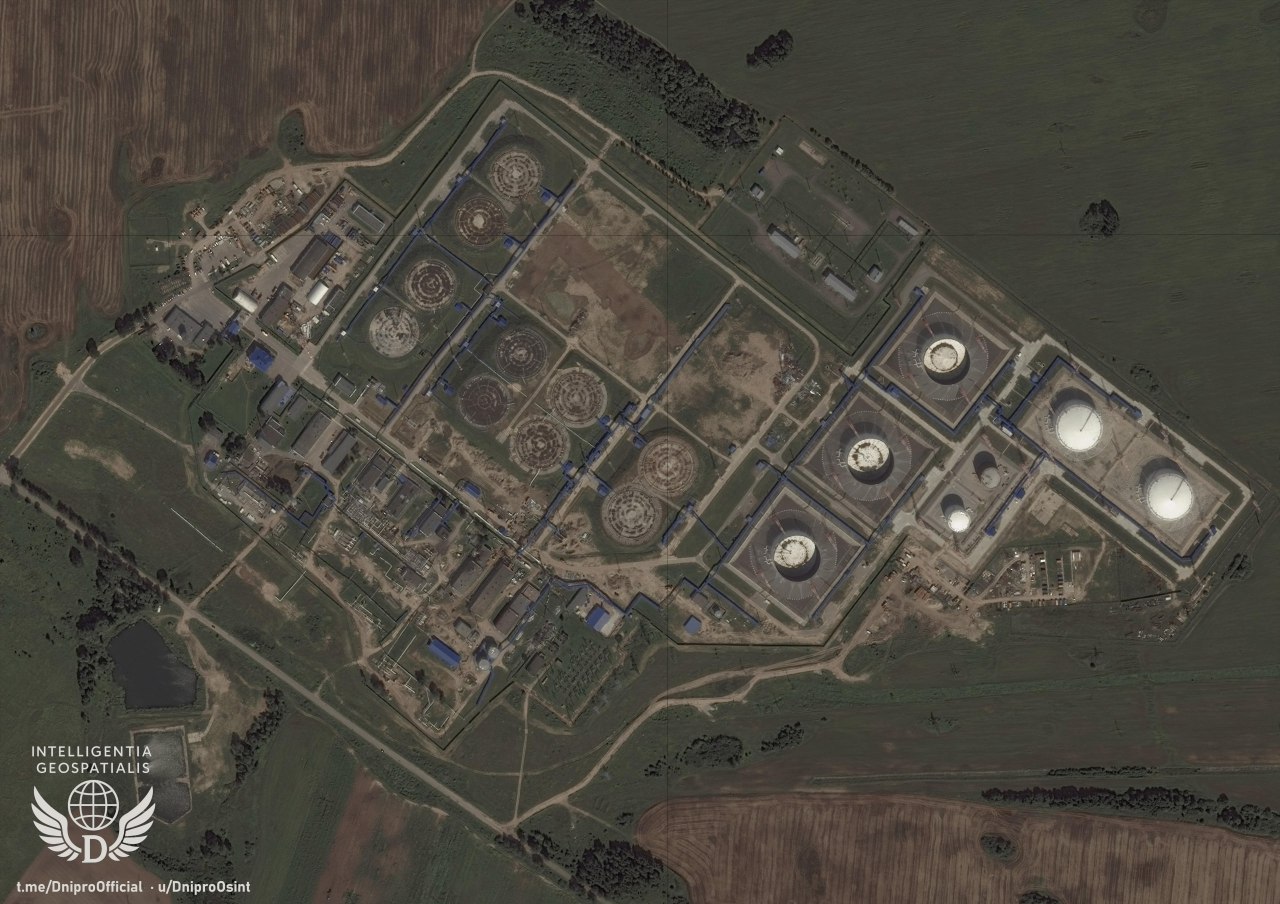
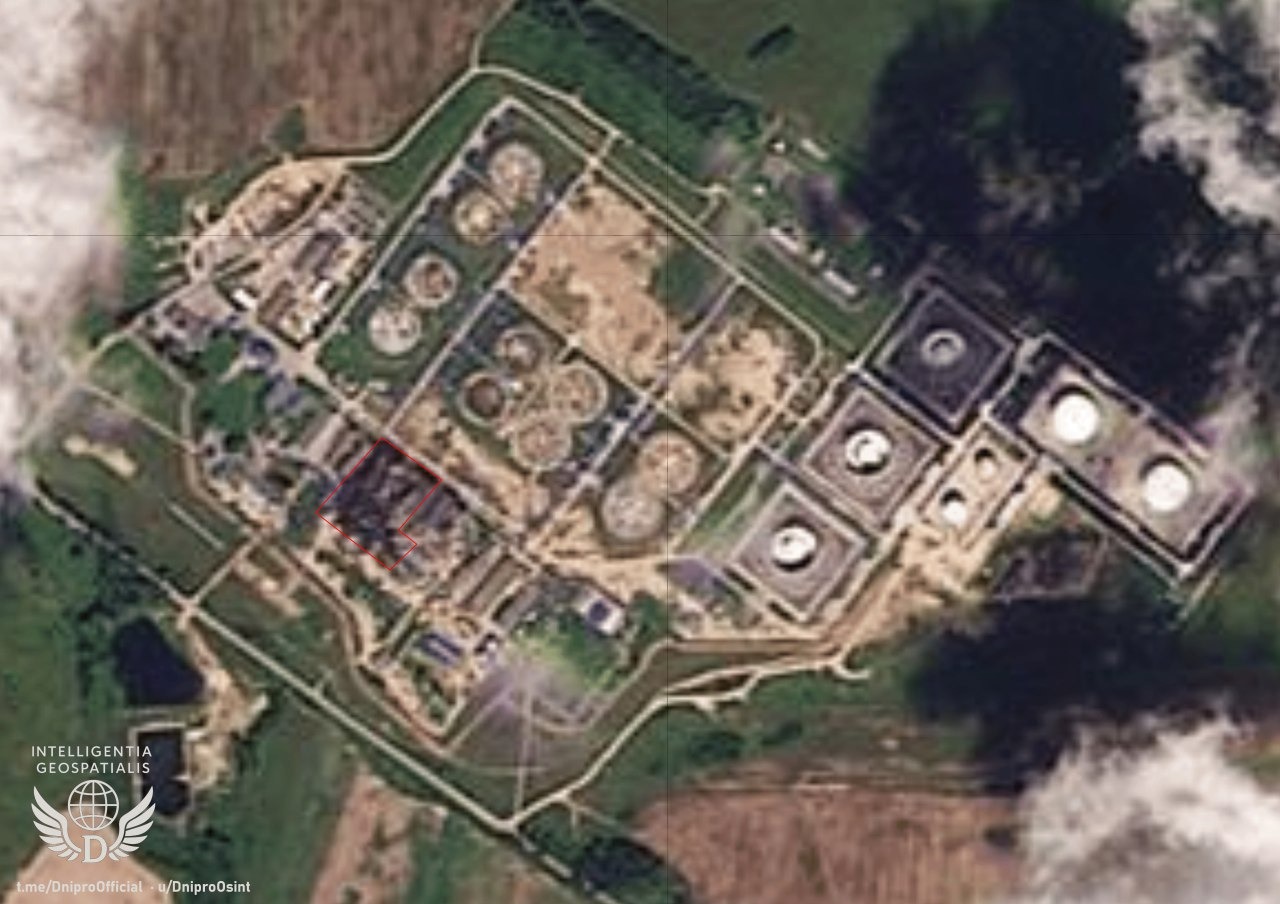
Unecha is located in the settlement of Vysokoye, about 60 km from the Ukrainian border, making it vulnerable to Ukrainian long-range strikes.
Dnipro Osint also released a satellite photo showing the Russian TRLK-10 Skala-M radar complex in Abrykosivka, occupied Crimea, before and after it was hit. The strike reportedly happened overnight on 9–10 August and was carried out by Ukrainian Special Operations Forces working with local resistance. The agency did not specify, what weapons were used to hit the facility.
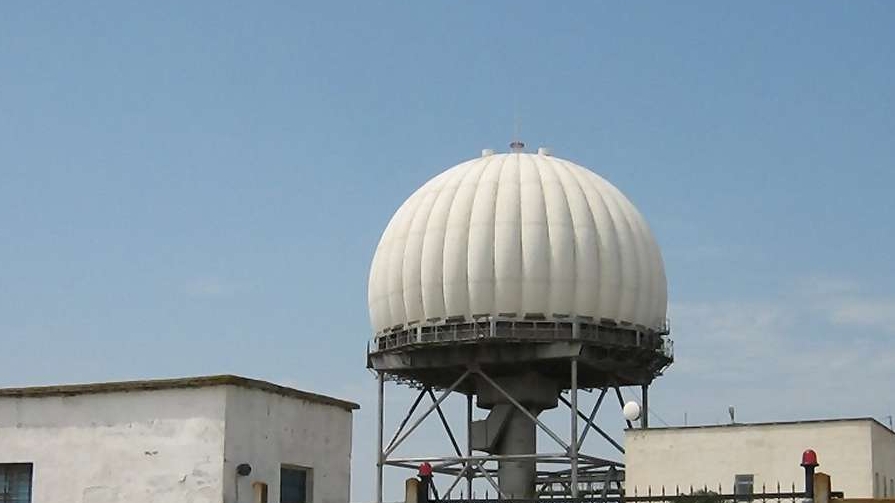
The Skala-M is a Soviet-Russian stationary route radar system with both primary and secondary detection capabilities, used for monitoring air traffic on routes and in approach zones. Its operational range reaches 350 km, making it a key element in Russia’s air traffic control network over Crimea. The new images show the radar system visibly damaged.

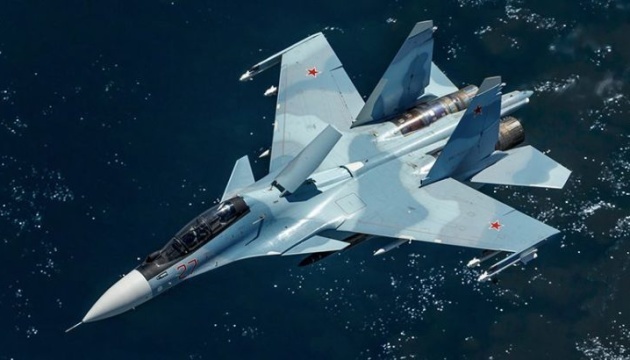
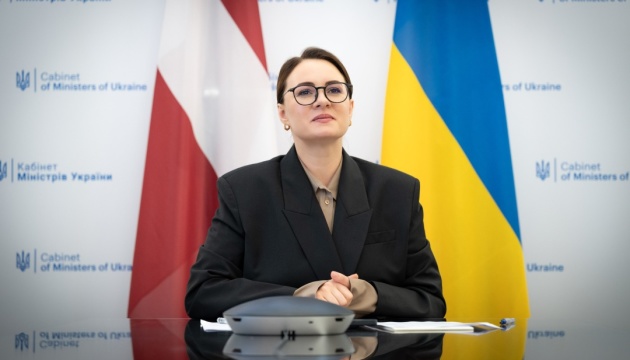
The move might dissuade Trump from imposing new sanctions on Russia

© Sputnik
Whatever the fallout from the US-Russia summit in Alaska, the Ukrainian president – his public image and reputation having been forged in conflict – is the only person to shepherd his country into a new era, says Mary Dejevsky

© PA Wire
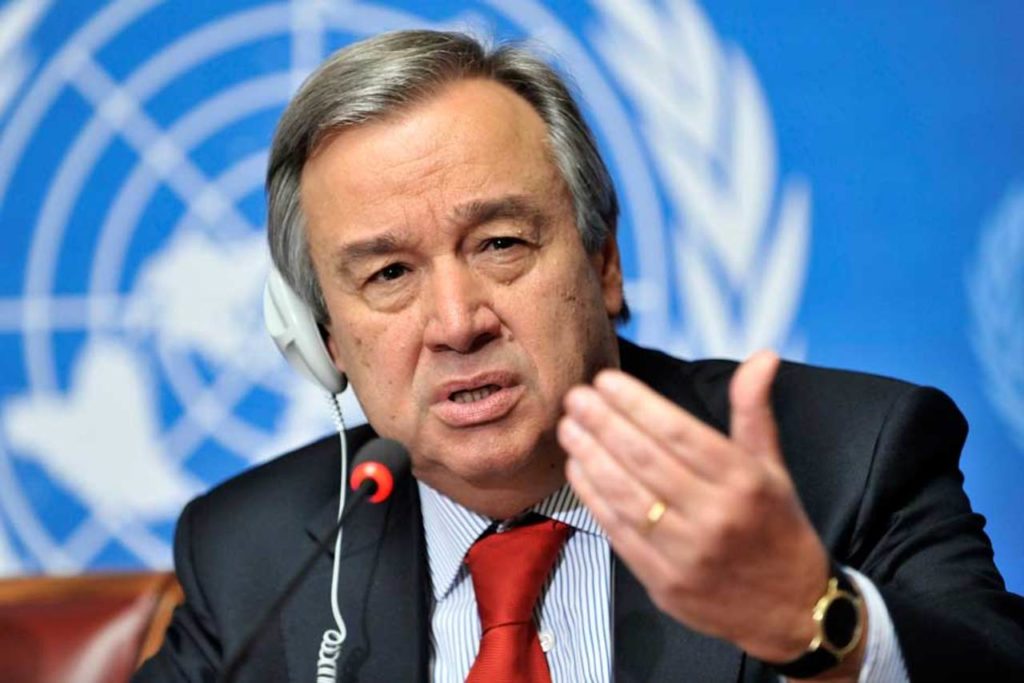
United Nations Secretary-General Antonio Guterres has placed Israel and Russia “on notice” that they could be listed next year among parties “credibly suspected of committing or being responsible for patterns of rape or other forms of sexual violence,” according to his annual report to the Security Council on conflict-related sexual violence obtained by Reuters.
The warning stems from “significant concerns regarding patterns of certain forms of sexual violence that have been consistently documented by the United Nations,” Guterres wrote in the report released.
Regarding Russian forces, Guterres said he was “gravely concerned about credible information of violations by Russian armed and security forces and affiliated armed groups” primarily against Ukrainian prisoners of war in 50 official and 22 unofficial detention facilities across Ukraine and Russia.
“These cases comprised a significant number of documented incidents of genital violence, including electrocution, beatings and burns to the genitals, and forced stripping and prolonged nudity, used to humiliate and elicit confessions or information,” the Secretary-General said.
The report notes that Russian authorities have not engaged with Guterres’ special envoy on sexual violence in conflict since Russia launched its full-scale invasion of Ukraine in February 2022.
Israel faces similar scrutiny over documented violations in Palestinian detention facilities. Guterres expressed grave concern about “credible information of violations by Israeli armed and security forces” against Palestinians in several prisons, a detention center and a military base.
“Cases documented by the United Nations indicate patterns of sexual violence such as genital violence, prolonged forced nudity and repeated strip searches conducted in an abusive and degrading manner,” the report states.
Russia’s mission to the United Nations in New York did not immediately respond to Reuters’ request for comment on the report.
Officially, several hundred cases of sexual crimes committed by the Russian army against Ukrainian prisoners of war have been documented, including various forms of sexual violence against women, men, and minors. Ukrainian authorities reported 342 cases of sexual violence by Russians in 2024, with victims including 236 men, 94 women, and 12 minors, while many cases remain unreported due to stigma and fear.
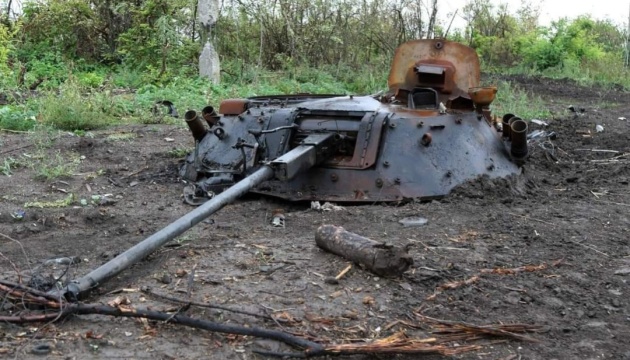
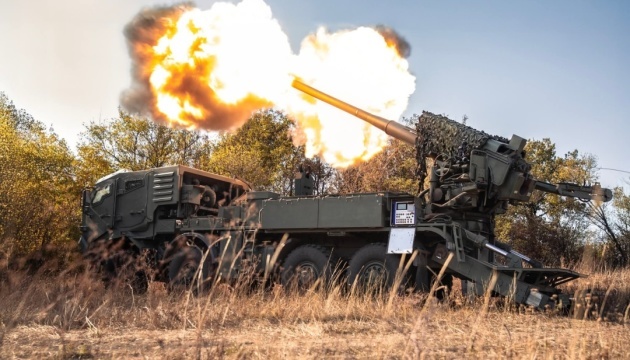
All eyes will be the Alaskan city that has provided a world stage for presidents and leaders in recent history

© Getty/iStock
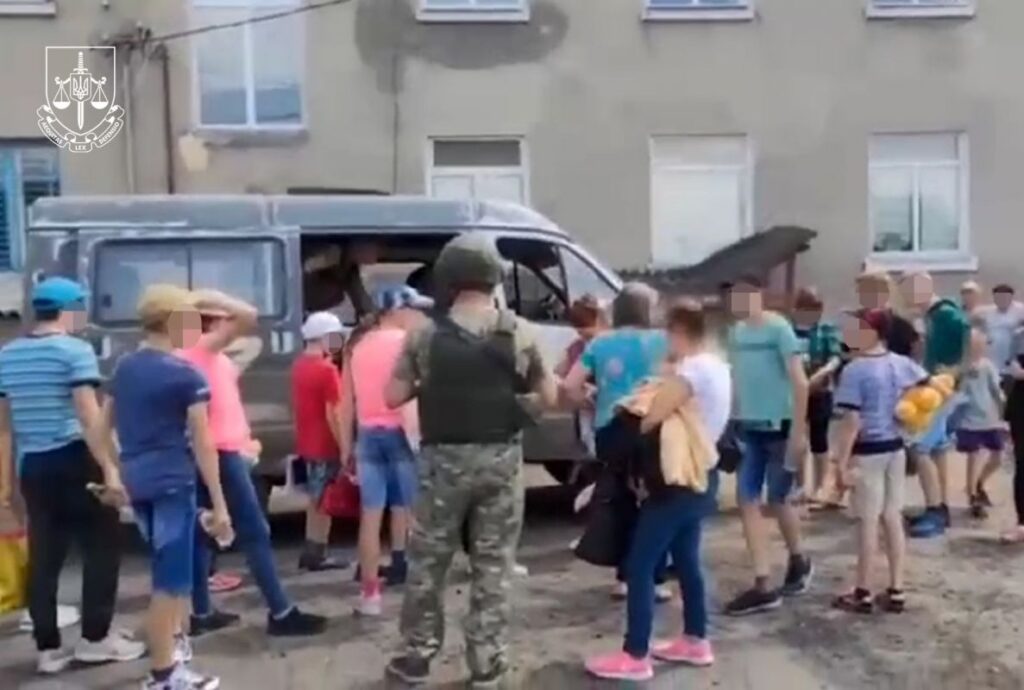
Ukrainian prosecutors have concluded their investigation into the forced deportation of children from an occupied special school, gathering evidence that will be used in both domestic and international legal proceedings.
Fifteen children from the Novopetrivka special school in southern Mykolaiv Oblast were tracked, seized, and shipped to Russia through a carefully orchestrated route across occupied territories, according to the Prosecutor General’s Office.
The children included ten without parental care, two orphans, two placed due to difficult circumstances, and one girl who had been adopted by US citizens but remained at the school when the full-scale invasion began in 2022.
Ukraine concluded a war crimes investigation proving Russia deported 15 children from a special school and subjected them to forced cultural conversion — Prosecutor's Office.
— Euromaidan Press (@EuromaidanPress) August 14, 2025
The children were forced to sing Russia's anthem, attend pro-Russian events, and were banned from… pic.twitter.com/A2xjknbiMY
Russian soldiers weren’t subtle. From day one of occupying Novopetrivka village, they showed up at the school. Regular visits. Head counts. Making sure every child stayed put.
The school director watched this pattern for months. July 2022 rolled around, and she’d seen enough. Time to get these kids out—quietly move them to Ukrainian-controlled territory where they’d be safe.
Someone talked.
Armed Russians stormed the school. They grilled the director. What was she planning? Where were the children going? Then they posted guards. No one leaves.
Twenty soldiers arrived the next morning. Children, director, her husband—everyone loaded up. Destination: Stepanivka village, deep in occupied Kherson Oblast nearby. Three months of waiting. For what?
Two collaborators threatened violence to organize the children’s transport through a complex route: from Stepanivka to occupied Crimea and then to Anapa in Russia’s Krasnodar Oblast.
Ukrainian investigators asked the obvious question. Did these children need evacuation?
No medical emergencies. No additional health screening required. The school had a functioning bomb shelter, food stocks, medicine, hygiene supplies. The village remained stable throughout.
So why move them?
The Prosecutor General’s Office reported that the children faced daily ideological pressure, including forced participation in singing Russia’s anthem, attending pro-Russian events, prohibition of Ukrainian language use, and bans on Ukrainian symbols. Fifteen children became test subjects in forced cultural conversion.
Russia also incorporates thousands of Ukrainian children from Russian-occupied territories into its military-patriotic youth movement called Yunarmia (Youth Army). This youth army, under the Russian Ministry of Defense, teaches children military skills like assembling assault rifles and marching, as well as propagates anti-European sentiments and portrays Ukraine as the enemy.
The militarization and assimilation efforts by Russia are likened to historical fascist youth indoctrination, with the aim of creating obedient future soldiers for the Russian regime. Ukrainian authorities and international observers have condemned these practices as war crimes and acts of genocide against Ukrainian identity and society.
The charges qualify the actions as war crimes under international humanitarian law, specifically citing violations of Article 49 of the Fourth Geneva Convention of 1949 regarding forcible displacement of civilians from occupied territory.
The children? All rescued through coordinated efforts between Ukrainian law enforcement, international partners, and volunteer networks. Every single one now lives safely abroad. The adopted girl reunited with her American family.
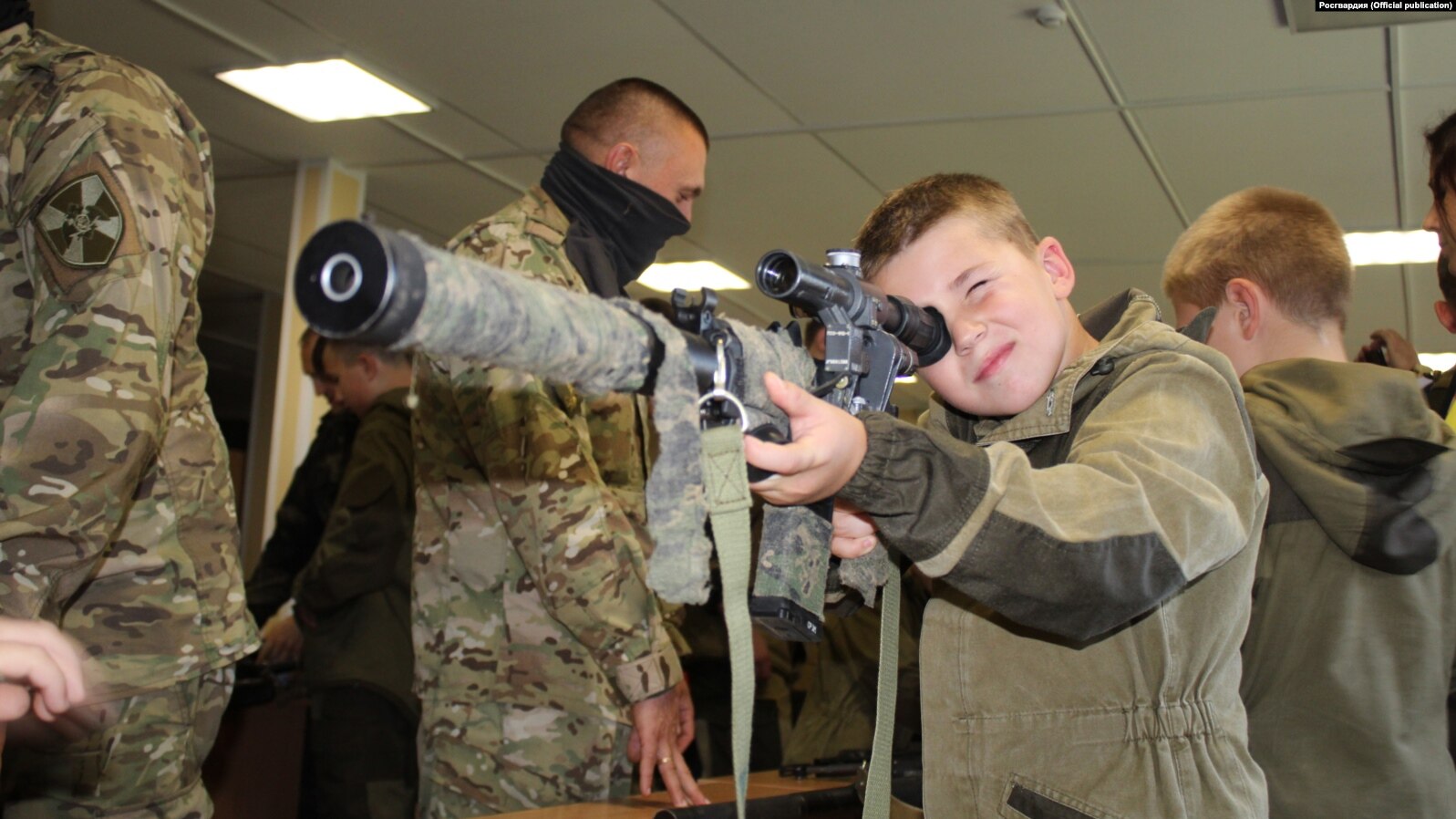

Ukraine’s hydroelectric reservoirs managed by Ukrhydroenergo have reached their lowest water levels in a decade due to poor spring flooding this year, the company’s press service reports.
The state enterprise faces a dual challenge as it not only generates electricity but also ensures water supply to consumers across the country. This requires maintaining stable water levels, which currently stand significantly lower than last year’s figures, according to Ukrhydroenergo.
“We are doing everything possible to accumulate sufficient reserves by autumn,” the company reported. To achieve this goal, water will be used “as rationally as possible” while preparing hydroelectric power plants (HPPs) and pumped-storage power plants (PSPPs) for the winter season.
The company is simultaneously conducting reconstruction work and scheduled repairs of its hydroelectric facilities while restoring and protecting its infrastructure from ongoing damage.
“For hydropower specialists, this is a unique experience ofconducting all these measures and implementing projects simultaneously,” Ukrhydroenergo wrote.
The water shortage coincides with broader energy storage challenges facing Ukraine. As of 5 August, the country had accumulated over 10 billion cubic meters of gas in underground storage facilities, marking the lowest reserves in at least 12 years

The Institute for the Study of War (ISW) reported on 13 August that Russian officials will arrive at the 15 August Trump-Putin summit in Alaska with the same war aims they have maintained for years — the complete political and military capitulation of Ukraine.
According to ISW, Russian Foreign Ministry Deputy Director of the Information and Press Department Alexei Fadeev said the Kremlin’s position had not shifted since Vladimir Putin’s 14 June 2024 speech. Fadeev claimed the delegation’s goals were dictated “exclusively by national interests” and indicated that Russia would not consider any territorial concessions.
ISW noted that Putin’s 14 June list of ultimatums remains the blueprint for Russia’s stance. It orders Ukraine to withdraw entirely from Luhansk, Donetsk, Zaporizhzhia, and Kherson oblasts — including territories Russian forces do not occupy. It also requires Ukraine’s demilitarization and the so-called “denazification” of its government and society, a phrase ISW said the Kremlin uses to justify removing the country’s democratically elected leadership. Another demand is Ukraine’s “neutrality,” which ISW assessed is aimed at preventing NATO membership.
ISW says Fadeev’s remarks confirm that Moscow “maintains its long-standing objectives in the war against Ukraine that amount to Ukraine’s full military and political capitulation to Russia and has not adjusted its position ahead of the Alaska summit.”
“Russian officials reiterated that Russia’s objectives in Ukraine remain unchanged ahead of the Alaska summit on August 15, once again demonstrating that the Kremlin remains uninterested in pursuing serious peace negotiations,” ISW wrote.
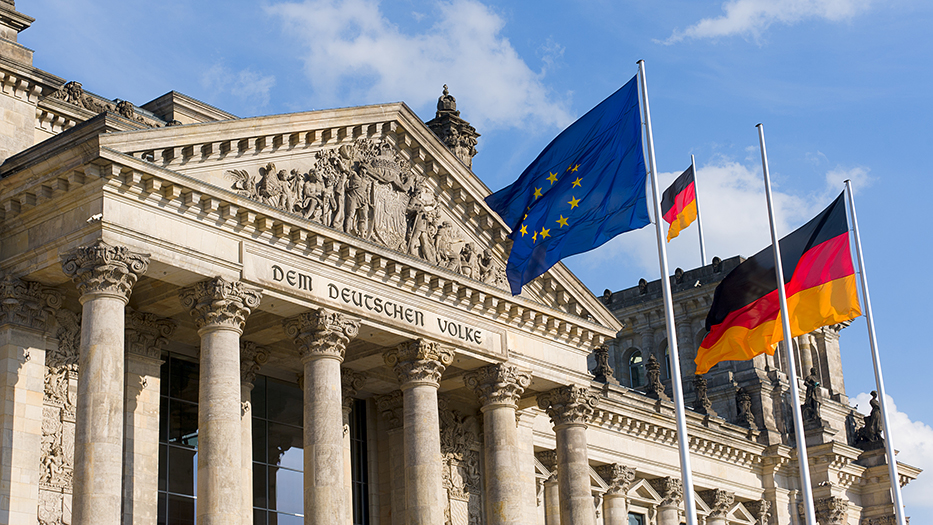
German public opinion is split on whether Ukraine should surrender occupied territories to end the war, according to a ZDF Politbarometer survey conducted ahead of a planned Trump-Putin meeting in Alaska.
The poll, conducted by telephone and online among 1,370 randomly selected voters between 11-13 August 2025, found 42% believe Ukraine should give up parts of its territory if this would end the war. However, a slightly larger group—45%—think Ukraine should continue fighting to liberate these territories. The remaining 13% responded “don’t know.”
The survey comes before the scheduled meeting for 15 August between US President Donald Trump and Russian President Vladimir Putin in Alaska to discuss the Ukraine war. Only 13% of Germans believe Trump can broker a ceasefire between Russia and Ukraine during this encounter, while 84% doubt such an outcome.
Germans show profound skepticism toward Putin’s intentions. Just 14% consider the Russian president genuinely interested in a lasting ceasefire, while 82% reject this notion. The distrust spans across party lines, with “different-sized majorities in all party affiliations” expressing doubt, according to the survey.
An overwhelming 89% of respondents consider it important or very important that Ukraine and President Volodymyr Zelensky participate directly in talks between Trump and Putin to achieve a lasting ceasefire. Only 9% view Ukrainian participation as unimportant.
Ukrainian President Zelenskyy recently confirmed he will not accept any territorial concessions in possible peace negotiations and “will be guided by the Constitution.” US President Trump has “expressed dissatisfaction” with these arguments from Zelensky.
The survey reveals the complexity of German public opinion as diplomatic efforts intensify to resolve the conflict that has lasted since Russia’s full-scale invasion began.

Czech Prime Minister Petr Fiala announced that Ukraine has received over one million large-calibre ammunition rounds this year through his country’s ammunition supply initiative, Novinky reported.
Speaking during a meeting of the “coalition of the willing,” Fiala detailed the progress of the Czech-led ammunition program.
“As of today, we have already delivered one million units of large-calibre ammunition to Ukraine this year under the Czech ammunition supply initiative,” he said.
The Prime Minister also praised coordination efforts with US President Donald Trump and welcomed the first-time participation of US Vice President J.D. Vance in the coalition meeting.
The Czech ammunition initiative secured sufficient resources in April to maintain monthly ammunition deliveries to Ukraine through September 2025. The program represents part of broader Czech military support, which includes participation in the drone coalition for Ukraine.
In August, Czech Foreign Minister Jan Lipavsky opened a diplomatic mission in Dnipro, expanding the country’s presence in Ukraine beyond traditional diplomatic channels

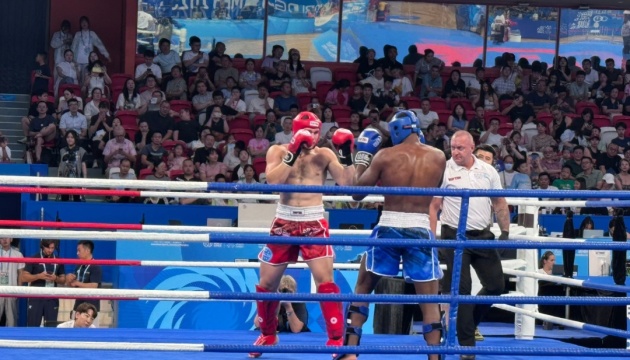



© Copyright 2025 The Associated Press. All rights reserved.
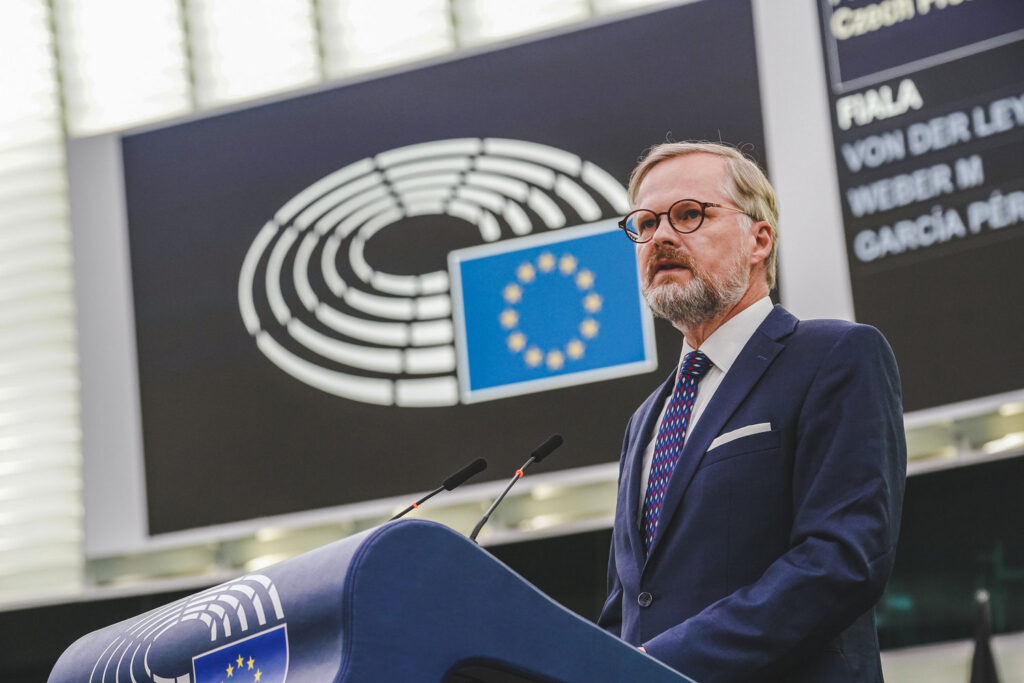
Ukraine has already received one million large-caliber artillery shells this year under the Czech ammunition initiative, Czechia’s Prime Minister Petr Fiala said on 13 August during an online meeting of the “coalition of willing.”
České Noviny reports that Fiala confirmed the deliveries during a virtual session that, for the first time, included US Vice President J. D. Vance. The coalition of willing — a group of states actively supporting Ukraine against Russian aggression — coordinated positions ahead of the Trump–Putin meeting.
Last year, the Czech ammunition program supplied 1.5 million rounds. Fiala praised the close coordination with Trump.
German Chancellor Friedrich Merz said after the videoconference with European leaders, including Ukrainian President Volodymyr Zelenskyy, that European and Ukrainian security interests must be preserved in the upcoming US–Russia talks. Merz has previously called the Czech ammunition program “exemplary” support for Ukraine, noting that Germany contributes “out of conviction.”
Zelenskyy also expressed gratitude last week on the social platform X. He thanked the Czech Republic for its artillery supply initiative, saying it had saved many lives and strengthened Ukrainian positions.
The program faces strong domestic opposition from former Czech Prime Minister Andrej Babiš. About a month ago, Babiš told Reuters that if his ANO party wins the autumn elections, it will cancel the initiative. He labeled it “nontransparent,” “overpriced,” and “rotten,” questioning the level of Czech contributions. According to Fiala’s government, the Czech Republic provided around €35 million to the program last year.
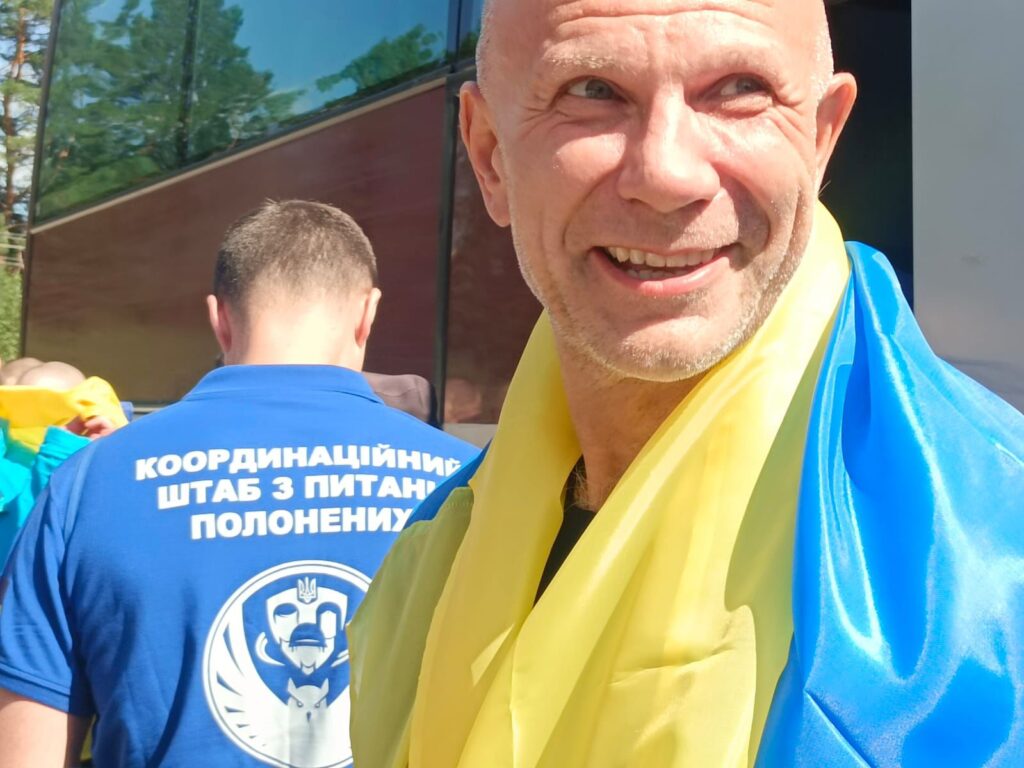
Ukraine and Russia executed a major prisoner exchange today, each side returning 84 individuals. The exchange included Ukrainian soldiers, civilians, and Mariupol defenders, as well as Russian servicemen, and was facilitated by the United Arab Emirates.
The swap comes as the world turns its attention to a one-on‑one summit between President Donald Trump and President Vladimir Putin, scheduled for Friday, 15 August, at Joint Base Elmendorf‑Richardson in Anchorage, Alaska. Trump characterizes it as a “listening exercise”, aimed at exploring a ceasefire in Ukraine, though critics warn the meeting may sideline Ukraine and favor Russia.
Ukraine and Russia swapped 84 prisoners each in a UAE-brokered deal — releasing Mariupol defenders and civilians held since 2014.
— Euromaidan Press (@EuromaidanPress) August 14, 2025
The exchange, under the Istanbul framework, lands just 24 hours before Trump and Putin meet in Alaska to discuss a potential Ukraine ceasefire.… pic.twitter.com/KzKUwhHR3s
Among those released was Captain Oleksandr Boychuk, commander of Ukraine’s only minesweeper, Henichesk, who resisted Russian seizure of his ship during the 2014 annexation of Crimea.
Journalist and serviceman Bohdan Kutiepov hailed his release:
“Free! My friend, a defender of Mariupol, is finally home after years in captivity. Miracles happen!”
Boychuk had been missing since March 2022, last seen in a Russian “filtration camp” near Mariupol.

President Volodymyr Zelenskyy said many released civilians had been held since 2014, 2016, or 2017. Human Rights Commissioner Dmytro Lubinets noted, “This return includes 51 civilians — political prisoners, men and women, some held for nearly a decade.” The youngest freed was 26, the oldest 74.
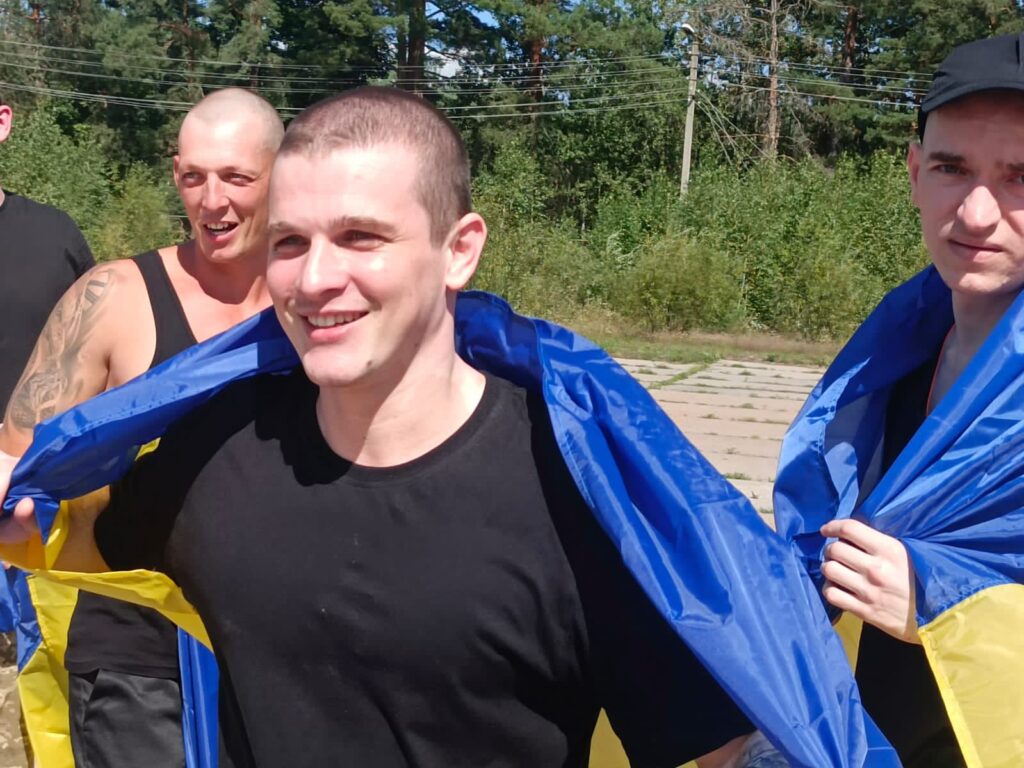
Ukraine handed Russia Mykola Fedorian, a Russian-appointed former deputy head of Crimea’s Interior Ministry. Convicted of treason in October 2024 and sentenced to 12 years in prison, he was released by a Kyiv court to allow the exchange.
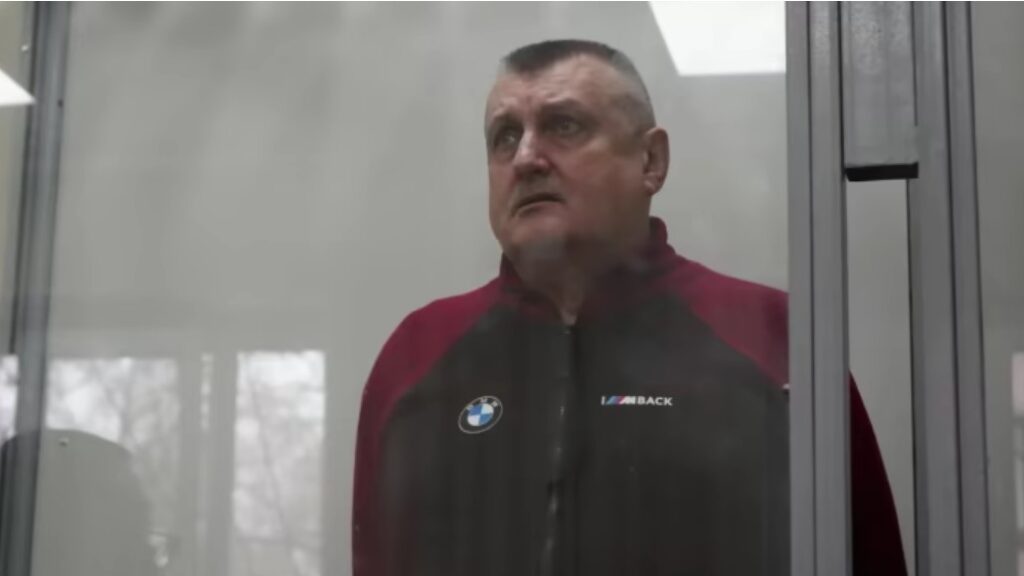
This exchange is part of an ongoing series of prisoner swaps carried out under the framework agreed during the Istanbul talks earlier this year. In those negotiations, Ukraine and Russia committed to prioritizing specific humanitarian categories — such as severely wounded and gravely ill prisoners of war, young soldiers aged 18–25, and the return of thousands of bodies of fallen troops — over strict number matching.
Since then, multiple exchanges have been conducted, with mediators like the United Arab Emirates facilitating individual deals.
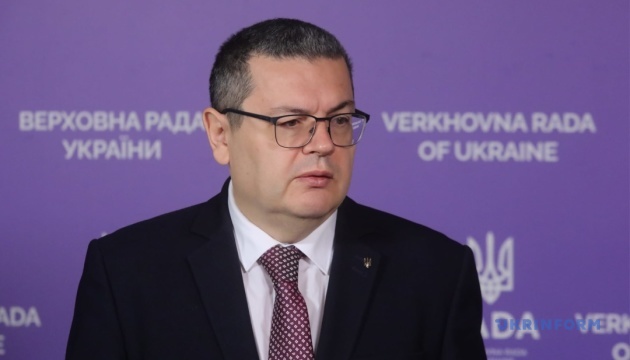
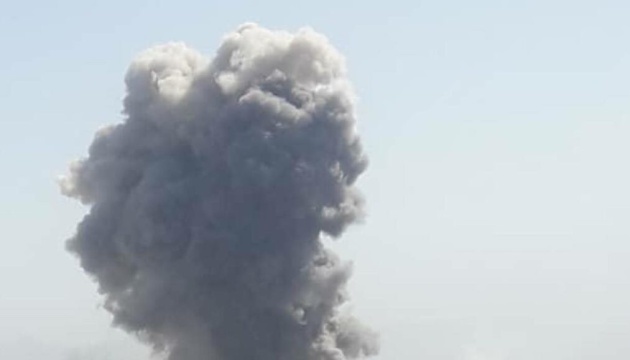
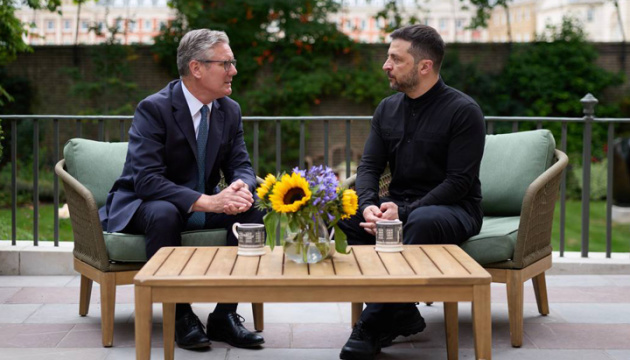
Donald Trump has already imposed a 50 per cent import levy on India

© AP
Donald Trump says he will push for a ceasefire when he meets Vladimir Putin in Alaska

© AP
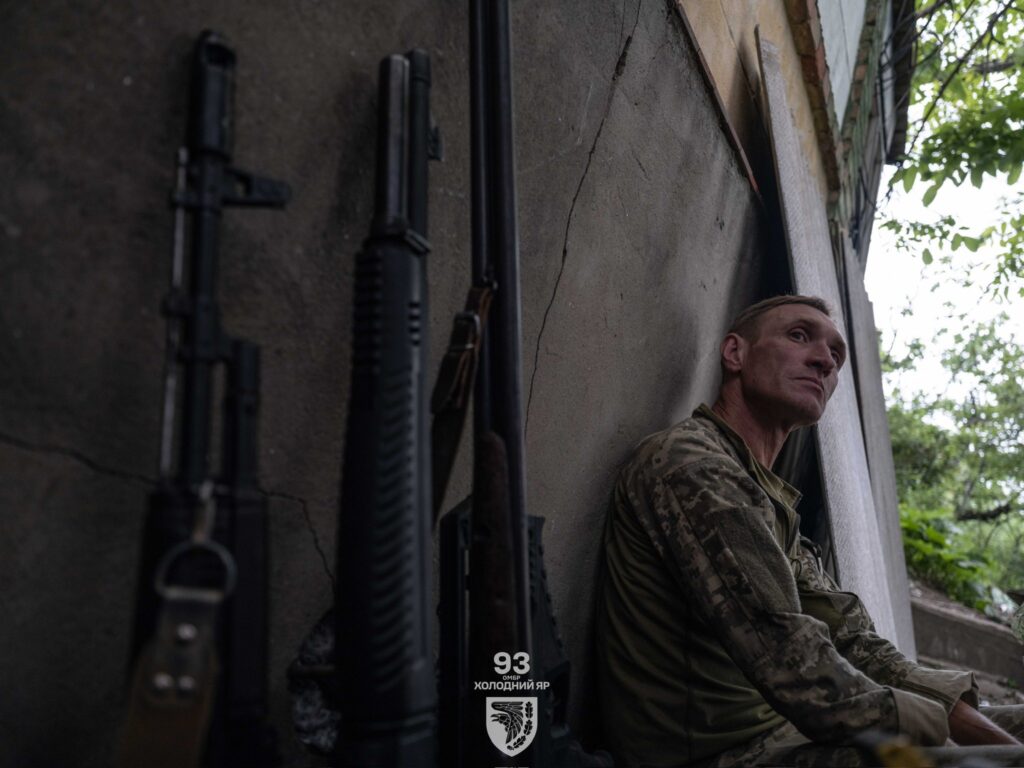
As the Trump–Putin summit in Alaska draws near, one demand threatens to overshadow diplomacy: Russia insists Ukraine withdraw entirely from Donbas as part of a ceasefire deal. At first glance, giving up this embattled region might seem a way to halt a war with no clear endpoint.
Yet the push for withdrawal raises a pressing question: can Ukraine truly afford to abandon Donbas? The stakes go beyond shifting lines on a map—it’s about the survival of Ukraine’s defenses, the fate of its heartland, and what kind of peace, if any, might follow.
President Volodymyr Zelenskyy has been unequivocal:
“We will not leave Donbas. We cannot do this. Donbas is a springboard for Russia’s future offensive… They want to take about 9,000 square kilometers—around 30% of Donetsk Oblast—and that will be a platform for new aggression.”
The term Donbas refers to two eastern Ukrainian regions: Donetsk and Luhansk oblasts. As of mid-2025, Russia occupies nearly all of Luhansk—about 99%—and roughly 75% of Donetsk, leaving only a narrow stretch under Ukrainian control.
It is within this fractured and embattled landscape that Ukraine’s most critical defensive line—the fortress belt—has held firm.
The fortress belt stretches from Sloviansk through Kramatorsk to Druzhkivka and Kostyantynivka, a 50-kilometer chain of fortified towns and cities. It relies as much on geography as on engineering: Karachun Hill towers over the plain, rivers carve natural moats, and slag heaps, quarries, and railway embankments reinforce defensive positions.
Victor Taran, a Ukrainian Armed Forces officer and co-founder of the “KRUK” UAV training center, captures its essence:
“The paths into this agglomeration are mined, re-mined, and controlled with interlocking fire.”
Within these urban zones, streets are blocked by tank traps and trenches; anti-drone nets span chokepoints. Just behind the front line lie the arteries of resistance—supply depots, repair hubs, and medical evacuation routes—all seamlessly integrated into defense.
This fortress belt isn’t static—it’s a dynamic defense network, built over a decade. Recreating it farther west would mean starting from scratch, on flat, exposed steppe.
According to the Institute for the Study of War (ISW), Russian forces have repeatedly failed to break through or encircle it. The belt’s cities aren’t mere strongpoints—they are the linchpin holding back the eastern advance. ISW notes that Russia’s demand for its surrender is a telling admission of its inability to take it by force alone.
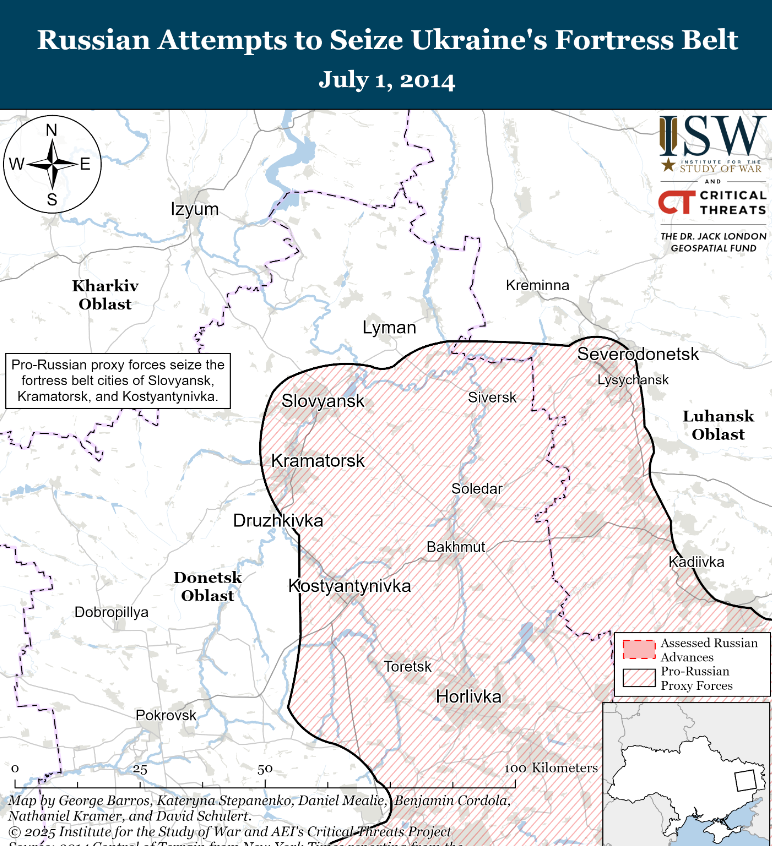
Abandoning the fortress belt would push Ukraine’s front line 82 km west onto open fields—no hills, few settlements, no river buffers. This flat terrain is made for airpower and drones, not defense.
Again, Taran warns:
“Without the fortress belt, our troops would be in open fields. The Russians would kill them with bombs and missiles like in a shooting range.”
To build a new defensive network farther west—in Kharkiv, Dnipropetrovsk, or Poltava oblasts—Ukraine would need months of engineering, vast resources, and unwavering Western support. And even then, the terrain offers no natural advantages like rivers, industrial strongpoints, or commanding elevations.
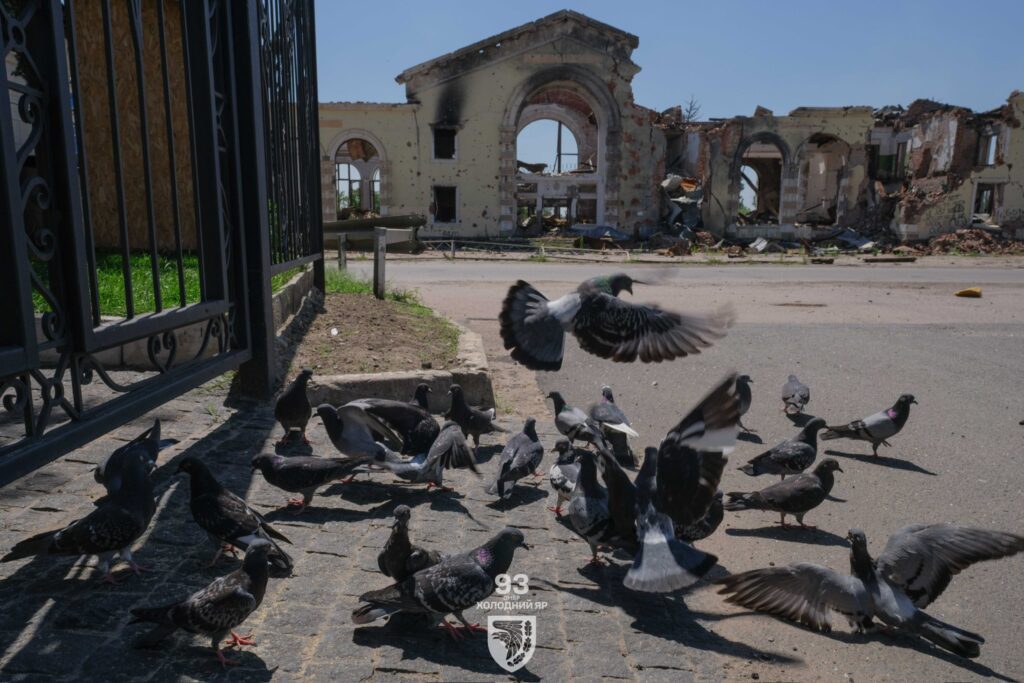
Even without forced retreat, Ukrainian defenses are under growing strain. The situation in Donetsk Oblast worsens daily. Recently, Russian forces made their deepest breakthrough in more than a year near Pokrovsk, advancing 10–17 km into Ukrainian-held territory.
Though narrow, this salient threatens to sever supply routes feeding the fortress belt. If it widens, Ukrainian positions in Sloviansk, Kramatorsk, and Druzhkivka could face isolation and collapse—a risk that underscores how close the danger already is.

Without the fortress belt, Russia would gain a direct launchpad to strike deeper into Kharkiv, Dnipro, Zaporizhzhia, and Poltava. The terrain offers nothing to slow such an offensive—unless a strong, pre-prepared defense stands in the way.
In 1938, Czechoslovakia ceded its fortified Sudetenland to Nazi Germany, hoping for peace. Six months later, the entire country was occupied. History teaches us: surrendering fortified ground to an expansionist power rarely ends wars—it triggers the next.

Donbas is more than scarred land—it is the cradle of Ukraine’s eastern defense. Surrendering it isn’t neutral—it is giving up the very shield that has held since 2014.
The question remains: can Ukraine afford to abandon Donbas? Some may see it as a pathway to peace. But if peace means sacrificing its strongest defenses, it may be a peace paid for with its survival.
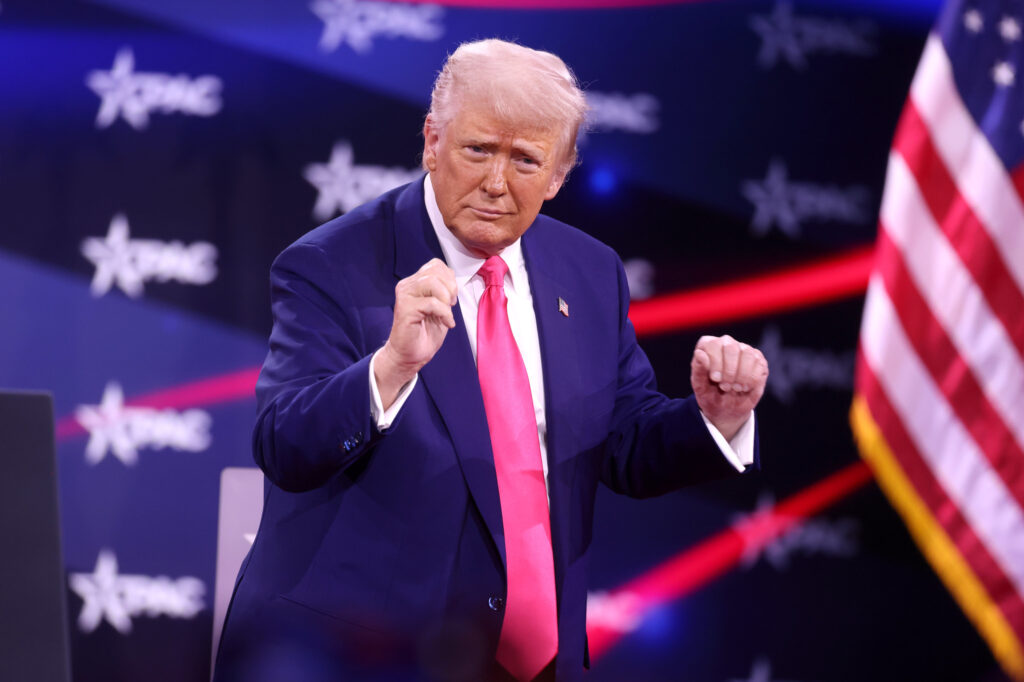
US President Donald Trump told European and Ukrainian leaders that the US is willing to contribute security guarantees for Ukraine — but only if NATO is not involved, according to Politico sources.
Politico reports that Trump’s comments came during a 13 August German-brokered virtual meeting aimed at aligning American and European positions before Trump’s 15 August summit with Russian President Vladimir Putin. The offer, while sparking cautious optimism, left many questions unanswered about its scope and strength.
According to Politico, three people familiar with the call — a European diplomat, a British official, and a person briefed on the conversation — said Trump indicated that Washington could play a role in helping Kyiv deter future Russian aggression if a ceasefire is reached. One person briefed on the call said the president made clear he would only agree to such a guarantee if it was not part of NATO. Trump did not define what the guarantees would entail, speaking only in broad terms.
A British official told Politico that Trump sees a US role in security guarantees as part of a final settlement. European officials, while encouraged that Trump appeared receptive to their calls for a deal, remain wary about the outcome of his talks with Putin.

Politico notes that Trump has stated any US guarantee will not include the direct provision of weapons or the deployment of American troops to Ukraine. Instead, his administration has allowed Europe to purchase American weapons for delivery to Kyiv. Officials say this policy has added pressure on Moscow and played a role in bringing Putin to the negotiating table. Even so, the scale of the guarantees is expected to fall short of what Kyiv and its backers want.
European governments have been exploring security arrangements without the US, including a coalition of willing ground forces to help uphold a future peace deal. However, they see American backing — even outside NATO — as essential to strengthening deterrence.
Trump has long opposed lethal military assistance for Ukraine during his presidency. While some allies believe he has considered their advice in pursuit of a ceasefire, they fear what might happen once he meets Putin in person. The lack of detail about the guarantees and their enforcement leaves uncertainty over whether such a deal could prevent future Russian aggression.
Former presidential candidate Wesley Clark warns Kremlin leader will not respond to conventional diplomatic threats, arguing sanctions have been tried and failed

© Newsmax
Giving up the region will have ‘catastrophic consequences’, say experts

© AP

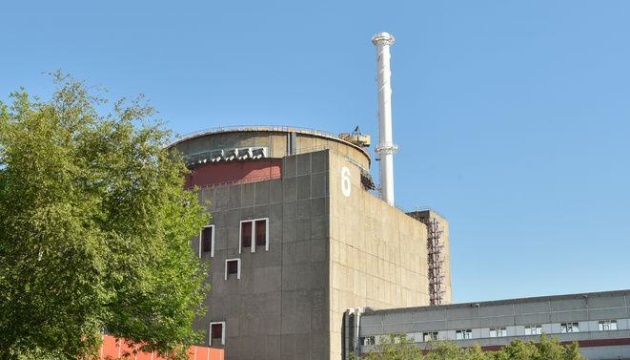
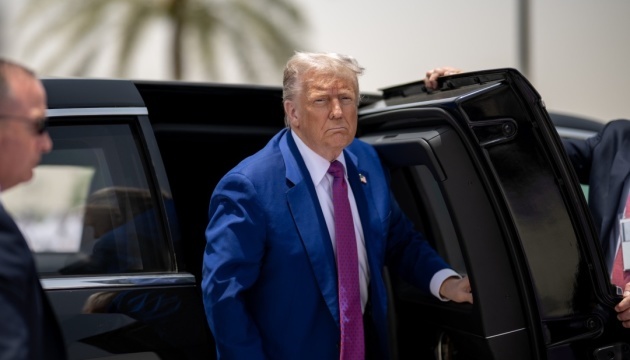
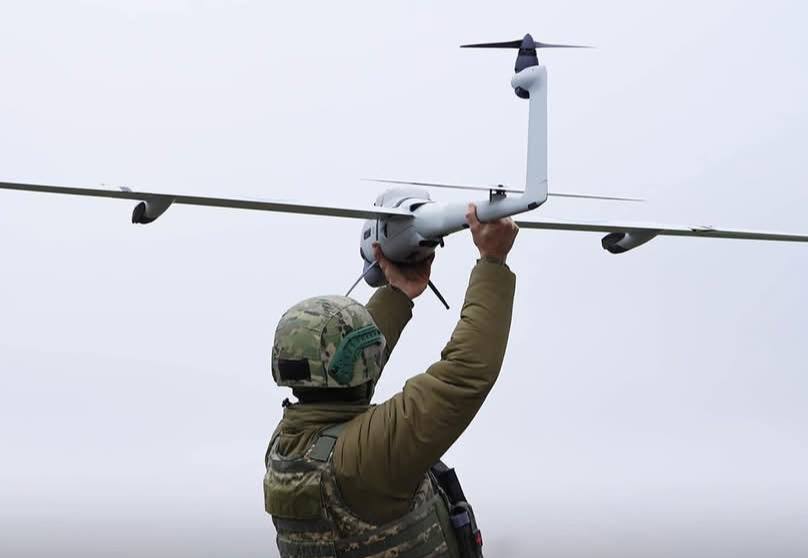
Western media buzz with speculation about potential Trump-Putin meetings in Alaska. Moscow sees another bargaining chip. But in Kyiv, military planners work from a different timeline — one measured not in months of negotiations, but years of grinding conflict that Russia still believes it can win through sheer persistence.
On 30 July, as President Trump threatened new tariffs against Moscow, Kremlin spokesperson Dmitry Peskov delivered a telling response: Russia has developed “certain immunity” to sanctions and no longer fears additional economic restrictions.
However, the real indicator of Russian intentions sits buried in draft legislation submitted to the State Duma. The proposal would replace traditional spring and autumn conscription cycles with year-round conscription — a move opposition Russian media trace directly to a confidential order from Vladimir Putin. This gives the proposal a strong chance of passing as early as this autumn.
The timing exposes Moscow’s calculation.
With Russian battlefield losses surpassing one million soldiers killed, wounded, and missing, the Kremlin needs constant replenishment without formally declaring mobilization.
The apparent goal of the draft law is to increase pressure on conscription-age citizens and push them toward signing contracts with the Russian Armed Forces. Human rights advocates and activists warn that such year-round conscription would allow the state to keep men under constant mobilization surveillance, enabling rapid replenishment of army ranks without formally declaring mobilization.
Ukraine’s Commander-in-Chief Oleksandr Syrskyi reported that, as of late June, approximately 695,000 Russian troops, including operational reserves, were engaged in the war against Ukraine. Over the past year alone, over 440,000 contract soldiers have joined Russia’s ranks.
At the same time, Russia continues forced conscription in temporarily occupied Ukrainian territories and is actively recruiting foreigners.
Despite recent Ukrainian advances in the Sumy Oblast— where several settlements were successfully liberated from Russians — the situation in Donetsk Oblast remains critical, mainly due to the overwhelming concentration of Russian forces there.
This systematic expansion suggests Moscow views the conflict as a war of attrition that it can win through numerical superiority.
Therefore, people in Ukraine do not believe in the prospects of lasting peace with Russia soon. On the contrary, Ukrainian authorities indicate that Russia’s main goal for 2025 is to fully capture the remaining parts of Donetsk and Luhansk oblasts, and by 2026, build on the success east of the Dnipro River, including an attempted occupation of Odesa and Mykolaiv, thereby cutting Ukraine off from the sea entirely.
This timeline explains why Kyiv does not believe in a lasting peace with Russia without security guarantees, nor in the effectiveness of any negotiations about Ukraine conducted without Ukraine.
On 9 August, President Volodymyr Zelenskyy emphasized that Ukraine is ready for real steps that could lead to peace, but no agreements “against Ukraine and without Ukraine” can be considered peaceful. At the same time, he stressed that Kyiv, together with international partners, is ready to seek ways to achieve a genuine and lasting peace “that will not collapse due to Moscow’s ambitions.”
Ukraine’s position, particularly regarding the inviolability of international borders, was supported in a joint statement by the leaders of Denmark, Iceland, Sweden, Norway, Finland, Latvia, Lithuania, and Estonia. The leaders of the Baltic and Northern European countries also stated that “negotiations can only take place in the context of a ceasefire.”
In response, Ukraine’s military and political leadership is actively seeking ways to strengthen national defense. Given that Ukraine’s mobilization reserve is significantly smaller than Russia’s, Kyiv is focusing on military innovation and asymmetric responses to Russian aggression.
In particular, drones’ success on the battlefield led to the creation of the world’s first Unmanned Systems Forces, which use aerial, naval (both surface and underwater), and ground-based drones in combat operations.
Alongside the general mobilization announced after the full-scale invasion, Ukraine has also introduced a voluntary recruitment pathway.
This allows citizens to apply directly to specific units or branches of service and choose roles based on their skills and interests.
Despite calls from some international partners to lower Ukraine’s mobilization age from 25 to 18 to replenish the ranks with younger personnel, Kyiv has chosen a different approach. Young people aged 18 to 24 can voluntarily join the Defense Forces through a special contract program, gaining financial and social benefits in exchange for one year of military service, which includes mandatory combat deployment. At the same time, enlistment is only possible in specific units and for certain specialties.
As of 30 July, this “18-24” contract program has been expanded to include specialists in unmanned systems — not just aerial drone operators, but also technicians working with ground-based robotic platforms. This version of the contract entails 24 months of service, with at least 12 months of direct combat involvement.
At the same time, Ukraine continues efforts to improve mobilization efforts and increase voluntary enlistment in the face of Russia’s ongoing summer offensive.
On 31 July, the Ukrainian government announced an additional ₴412.4 billion (about $10 billion USD) in defense and national security funding. Of this, ₴115 billion ($2.7 billion) is earmarked for military personnel salaries, while ₴216 billion ($5.1 billion) will fund the procurement and production of weapons, military equipment, drones, etc.
In fact, Ukraine has been running a program for the decentralized procurement of drones and other important battlefield equipment since last year, and thanks to its implementation, the effectiveness of striking the enemy has increased by 40%. In addition, a decision was made to increase vacation time for service members — an initiative personally proposed by President Zelenskyy, according to Deputy Head of the Presidential Office, Colonel Pavlo Palisa.
Kyiv continues to refine its mobilization strategies and strengthen its army support systems.
The gap between Western diplomatic timelines and Ukrainian military planning creates a fundamental policy challenge. While international partners hope for a negotiated resolution, both Moscow and Kyiv prepare for an extended conflict.
Despite some hopes for diplomatic success, the daily missile and drone attacks on Ukraine, the deaths of civilians, and the situation on the front lines show that Moscow is not interested in peace and is betting on victory by force.
Ukraine firmly maintains its position that it will neither give up its land nor exchange it for temporary agreements.
The only effective response to Russian aggression remains strengthening defense capabilities through enhancing the capacities of the Armed Forces of Ukraine, developing modern technologies, and the determination and unity of the international community, understanding that Russia responds only to the language of force.
Key takeaways for international partners:
Editor’s note. The opinions expressed in our Opinion section belong to their authors. Euromaidan Press’ editorial team may or may not share them.
Submit an opinion to Euromaidan Press
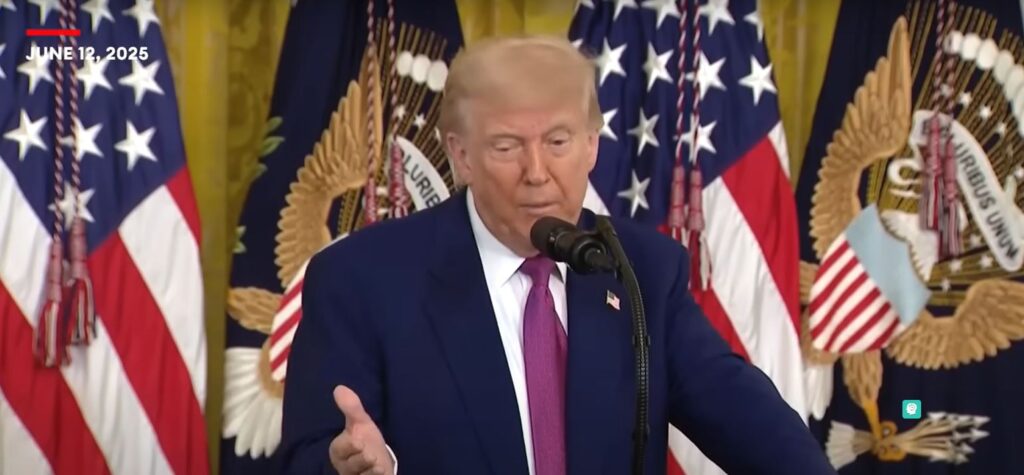
US President Donald Trump’s Ukraine ceasefire plan was the focus of a call with European leaders and Ukrainian President Volodymyr Zelenskyy on 13 August, NBC News reports. European officials briefed on the discussion said the president told participants he will not discuss any division of territory when he meets Russian President Vladimir Putin in Alaska on 15 August, but will push for an end to the fighting first.
NBC cites two European officials and three other people briefed on the call who said Trump’s stated goal for the Alaska meeting is to secure a ceasefire in Ukraine. The sources told NBC that Trump and the other leaders agreed no peace negotiations should begin until a truce is in place. Zelenskyy warned during the call that “Putin definitely does not want peace.”
European and Ukrainian officials had grown uneasy after Trump’s recent public remark suggesting there could “be some land swapping” between Russia and Ukraine. NBC’s sources said those concerns were addressed directly, with Trump assuring allies that Ukraine must decide any territorial concessions and that no such deals would be struck without Kyiv’s consent.
According to NBC, participants in the call agreed that if Putin refuses a ceasefire, Trump will likely move to impose new sanctions on Russia. Two additional people familiar with the conversation told NBC that some European leaders left feeling more positive about the president’s approach, with one source saying achieving a truce is the top priority for the meeting.
NBC reports Trump said after the call that there is a “very good chance” of a second meeting involving himself, Putin, and Zelenskyy soon after the Alaska summit. He suggested such talks could happen “almost immediately” if the first meeting clarifies each side’s position.
White House press secretary Karoline Leavitt told NBC the administration would not comment on private diplomatic conversations but reiterated that Trump wants to end the war and stop the killing. Vice President JD Vance, who also joined the Wednesday call, told US troops in the UK that ending the war in Ukraine is one of “our most important shared security goals in Europe.”

Germany will fund a $500 million package of US-sourced weapons for Ukraine under NATO’s Prioritized Ukraine Requirements List (PURL) initiative. NATO said the shipment will focus on urgent operational needs, such as air defense systems to counter intensified Russian air strikes.
On 13 August, Germany’s Foreign Ministry said the PURL initiative covers military equipment either not produced by European industry or available more quickly from the United States than from European partners or Canada. The list includes critical air defense capabilities needed to counter Russian aerial attacks that are causing growing civilian casualties across Ukraine.
NATO Secretary General Mark Rutte welcomed Berlin’s decision, calling it proof of Germany’s enduring commitment to Ukraine’s defense. He said the new package will help Kyiv defend itself against Russian aggression and underlined Germany’s role as NATO’s largest European military donor to Ukraine.
Germany’s Defense Ministry confirmed the package will be one of the first major contributions under the NATO mechanism. Officials stressed that the funding is intended to meet Ukraine’s most urgent battlefield requirements.
Germany’s contribution follows earlier announcements by the Netherlands, as well as a joint pledge from Denmark, Norway, and Sweden. Each package is valued at about $500 million and is sourced from US stockpiles to accelerate delivery.
The German government said the decision underscores its commitment to substantial and reliable support for Ukraine, as well as solidarity within the alliance. Coordination with NATO and allied governments on the details is ongoing.
Previously, US President Donald Trump announced on 14 July that the United States will supply Ukraine with multiple packages of military equipment and munitions, purchased by NATO. He named Patriot air defense systems among the weapons planned for delivery.
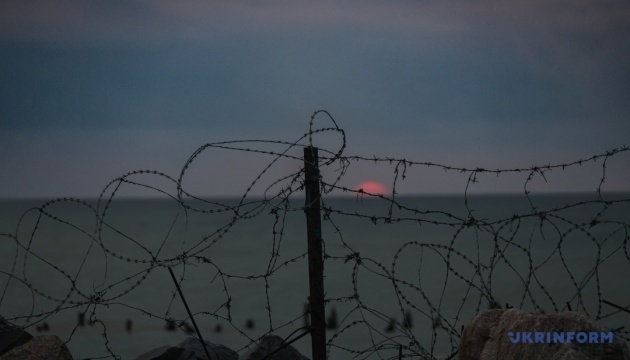
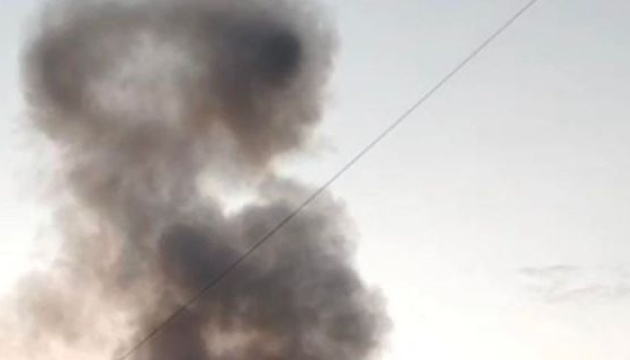
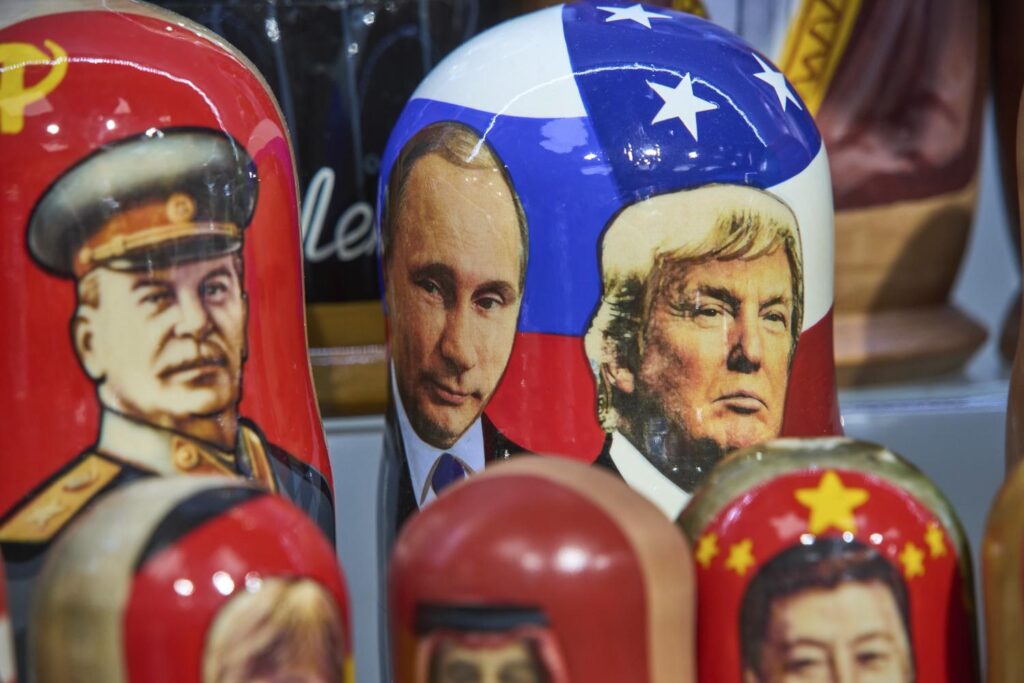
Trump and Putin will likely walk away Friday with aligned foreign policy against Europe—but no path to peace.
Trump has already demonstrated his negotiating skills by offering Russia substantial concessions before talks have even started. He has offered Putin nearly everything he demanded to even start negotiations with Ukraine.
In July 2023, I argued that Trump’s “peace plan” was a blueprint for Russian victory over Ukraine and the West. He has since offered even greater concessions while pressuring the victim and rewarding the aggressor.
That’s not negotiations. It is capitulation at the peril of the rule-based world order, Europe and the transatlantic relationship.
The talks between Trump and Putin in Alaska are unlikely to result in an unjust, temporary peace on Russian conditions. Nor will they produce the just and lasting peace the free world is calling for.
Why? Neither has the cards to change the strategic situation. But they will produce something both leaders want: deeper alignment against European allies.
Trump wants more than anything else to achieve a diplomatic victory, resetting relations between Russia and the United States, turning Russia away from China through a “reverse Nixon” strategy, and ensuring increased trade and access to Russian minerals.
These goals are far more important to him than lasting and just peace. They are also far more unrealistic than the latter.
There is a big gap between what Trump wants and what he can achieve.
Trump has also forsaken all means necessary to force Russia to seek peace. He has aligned his foreign policy with Putin’s and declared himself unwilling to use US military power to pressure Russia. Threats of secondary sanctions and tariffs are unlikely to sway a country that is not waging war for territory but for great power status, strategic parity with the US, and a sphere of influence over parts of NATO territory.
The Kremlin has “played” all its “cards” short of nuclear weapons.
The Kremlin is little by little creating the conditions for a Black Swan event that might one day topple the regime.
Yet Putin believes he is winning. He has repeatedly rejected Trump’s so-called Peace Plan. Kremlin statements continue to demonstrate that Russia remains committed to achieving its original war goals and will not sign up to anything that does not deliver a victory.
Besides the support from China, Iran, and North Korea, President Trump is possibly Russia’s best hope for a victory in Ukraine. He has already demonstrated his willingness to betray allies and partners to secure what he sees as the US national interests (hence his America First policy).
The Trump administration is actively pursuing a reset or normalization of relations with Russia. The administration and Russian officials are discussing economic cooperation and removing barriers to mutual trade, with Trump’s tone increasingly favorable toward potential business ties.
Additionally, the policy shift is naively believed to pull Russia away from China, undermining the strategic alliance between Moscow and Beijing.
The Kremlin is actively entertaining the idea that a reset of relations is both possible and mutually beneficial, offering potentially great economic rewards. It is actively manipulating a US administration that has recently fired over 1,300 career diplomats and civil servants, losing institutional knowledge, diplomatic capacity, language and cultural expertise.
Russia, in contrast, maintains a professional diplomatic corps with deep US expertise.
The talks between the US special envoy, Steven Witkoff—an American lawyer and real estate investor—and highly experienced Russian diplomats like Sergey Lavrov (Foreign Minister), Yuri Ushakov (Presidential Aide), Kirill Dmitriev (Head of the Russian Direct Investment Fund; Special Representative for Foreign Investment), and not least President Putin, demonstrates the extreme imbalance between the two parties.
Combined diplomatic experience? 172 to 0.5 years in favor of the Russian Team.
As Daniel Hannan, former member of the European Parliament, observed: “Whatever his motives, Trump has behaved exactly as a Russian asset would.”
President Trump has threatened allies with land grabs by military force, annexation, started a trade war, and increasingly aligned his foreign policy with that of Russia. The President sees the EU, which represents most of the US’s European allies, as “worse than our so-called enemies.” He argues that the EU was formed to screw the US.
Statements by the Trump administration signal a deepening of the transatlantic chasm beyond different perceptions of Russia to an even deeper societal rupture about values and the nature of democracy. They mark an end to the era of shared US-European values.
President Trump’s repeated concessions to Russia and the absence of European representatives at the negotiations underline the scale and scope of the strategic split.
Given Trump’s all too generous offers, Putin’s persistent refusal to engage in meaningful negotiations, and their common refusal to involve Europe in the talks, the fear of betrayal comes easily.
The meeting between Trump and Putin will likely have limited impact on the war but significant impact on Western unity.
The meeting will likely be a “feel-out session” sharing perspectives on the war and the way forward. But both presidents will walk away with even more aligned foreign policy, united in ramping up pressure on Europe and Ukraine.
It will provide Trump another excuse to delay meaningful sanctions, tariffs or actions that might pressure the aggressor.
Trump has blinked, shown his cards, and demonstrated weakness and is, consequently, left without leverage. Putin gets an American partner in pressuring European allies while Trump gets to claim he’s pursuing “peace” while avoiding confrontation with Moscow.
It is, unfortunately, smoke and mirrors.
Editor’s note. The opinions expressed in our Opinion section belong to their authors. Euromaidan Press’ editorial team may or may not share them.
Submit an opinion to Euromaidan Press
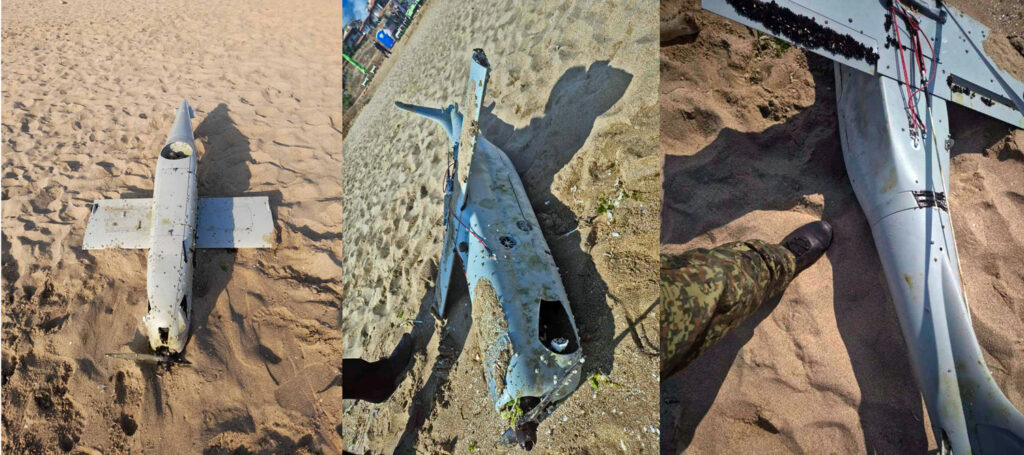
A Russian Feniks (“Phoenix”) reconnaissance drone washed ashore in Bulgaria and was destroyed by the Bulgarian Navy. Bulgaria’s Ministry of Defense said the unmanned aircraft was found on a beach in Sozopol on 12 August, after vacationers noticed it in the sand. The drone, similar in design to the Russian Orlan-10 but with distinct features, appeared damaged from long exposure to seawater.
According to the Bulgarian Ministry of Defense, the fixed-wing drone was spotted in the morning by people relaxing on Harmani Beach in Sozopol — the city on the Black Sea’s southwestern coast about 50 km from Türkiye. The local Burgas Oblast administration contacted the military at 10:00, prompting authorization from Chief of Defense Admiral Emil Eftimov to deploy a navy team.
A specialized unit from the Bulgarian Navy, led by Captain Third Rank Zhivko Karchev under the order of Fleet Admiral Vanio Musinski, arrived to investigate, mark, extract, transport, and dispose of unexploded ordnance. Upon inspection, the team determined the drone was of an unknown model and could not confirm whether it contained any munitions.
For security reasons, and on the recommendation of the operation’s lead, the navy received permission to destroy the drone on site. At 11:20 local time, the UAV was eliminated in line with safety regulations. The Ministry of Defense later posted images of the wreck on Facebook, showing broken wings and a damaged fuselage.
Described by the Bulgarian military as an unidentified model, Ukrainian military news portal Militarnyi initially identified the drone as Orlan-10 — a widely-used Russian UAV model, very similar to the rarer Feniks. The Telegram community “Potuzhnyi informator,” however, later correctly identified the photos of the wreck as Feniks.
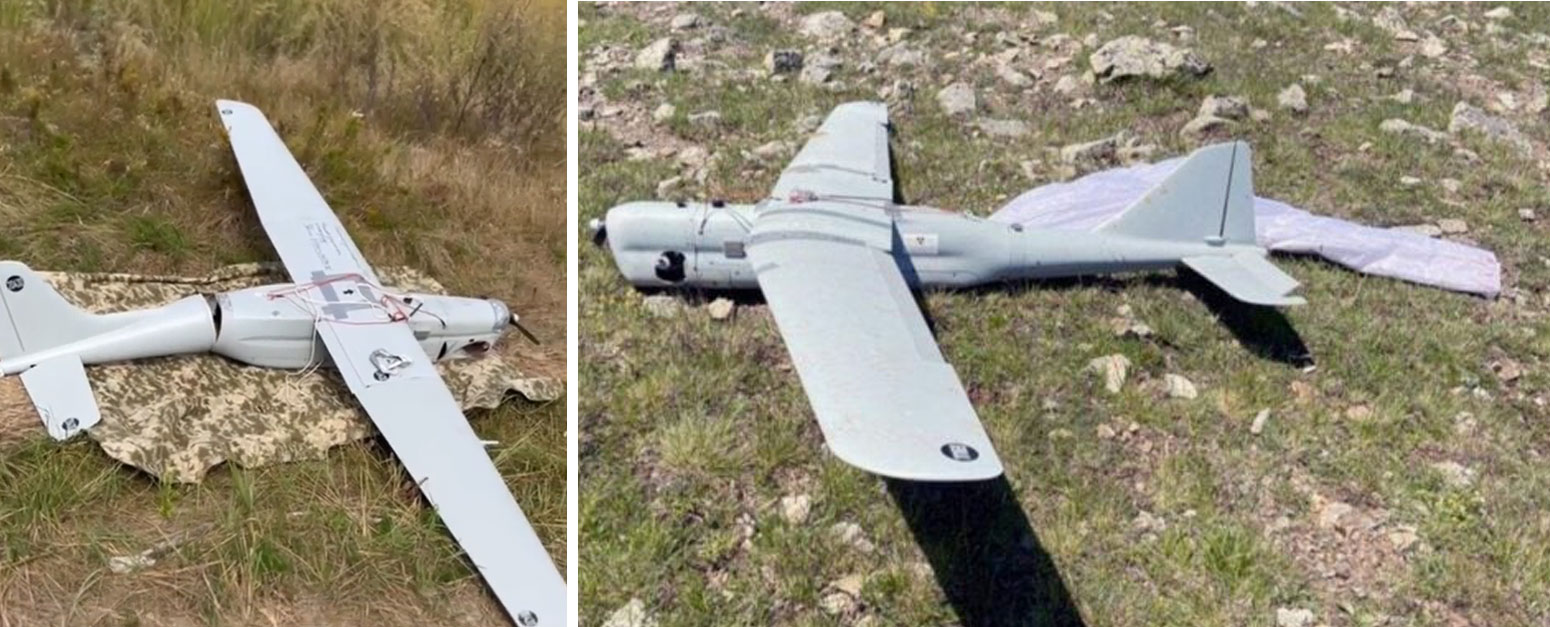
Bulgarian officials said the condition of the wreck suggested it had been in the water for several months before washing ashore.

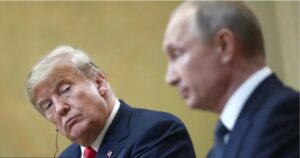 |
Putin came for the summit. Trump brought the white flag. For six months, Trump has found excuses for Putin, punished allies instead of adversaries, and now arrives at the table already conceding the game. |
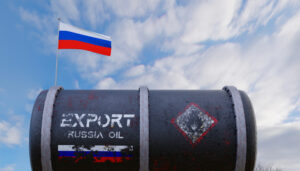 |
As sanctions bite, Russia’s war chest nears empty by Christmas. The Russian economy is not collapsing, but it is stagnant and suffering high inflation. And this economic decline could be a tipping point, because Russia may run out of liquid reserves, prompting the Kremlin to cut public expenditures. |
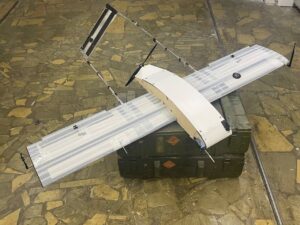 |
Ukraine’s new Privet-299 drone spies on Russians where FPVs can’t reach — and bombers can’t fly. The recently revealed Privet-299 drone could help extend the robotic kill zone by tens of kilometers from the front line. |
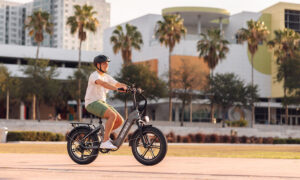 |
Top 7 must-have gadgets for modern college students. Seven practical, everyday gadgets that help students stay on track, get around, and make the most of campus life |
 |
The West is losing the information war because it won’t fight dirty. Facts don’t defeat fascists. Fear does. |
50-kilometer fortress: Why Ukraine’s Donetsk defense belt matters more than territory. Eleven years of Ukrainian military investment in Donetsk Oblast’s primary defense network could face elimination through diplomatic concessions rather than military defeat, the ISW reported
Zelenskyy: Ukrainian Armed Forces will not leave Donetsk and Luhansk oblasts on their own. Ukraine faces the prospect of a “third war” if its forces abandon Donbas territories either voluntarily or under international pressure, Zelenskyy said three days before Trump-Putin meeting
Drones attack refineries in Sloviansk-on-Kuban and Volgograd, fire reported
. Russian oil refineries in two regions came under drone attack overnight, with debris from intercepted aircraft damaging a residential building in Volgograd
FT: European defense plant space tripled since 2021. Three years after Russia invaded Ukraine, Europe has constructed an industrial war machine spanning 7 million square meters of new weapons facilities, marking the continent’s largest defense buildup since World War II.
Ukrainian Intel: North Korean troops remain in Kursk Oblast. 11,000 North Korean soldiers remain stationed across four brigades in Russia’s Kursk and Belgorod oblasts, with an additional 6,000 personnel expected for infrastructure and support operations.
Norwegian intelligence considers Russia the biggest threat to country. The Norway’s top spy said that Russia poses the biggest threat to Norwegian security, even as Moscow’s cyber operatives target the nation’s dams.
Court orders Ukrainian airline to pay beyond $180,000 limits to families of victims in Tehran plane crash. Canadian court found UIA failed to assess risks before flying 167 passengers and 9 crew members from Tehran on the same day in 2020 Iran retaliated against the US for assassinating general Qasem Soleimani.
The Telegraph: Russia is racing to seize as much Ukrainian territory as possible ahead of peace talks with Trump. Small Russian reconnaissance groups have infiltrated Ukrainian defenses in eastern Donetsk, forcing Kyiv to deploy special forces units to prevent further territorial losses before scheduled peace negotiations in Alaska
Norway’s domestic intelligence suspects Russian trace in cyber sabotage of dam. Norwegian intelligence officials blame pro-Russian hackers for a cyber attack that kept dam gates open for four hours in April, releasing 500 liters per second.
Merz meets Zelenskyy in his office in Berlin. Ukrainian President Volodymyr Zelenskyy arrived by helicopter at the German chancellery for a videoconference with Donald Trump and European leaders, one day before the US president’s planned summit with Vladimir Putin in Alaska
Belarus confirms nuclear weapons training drills with Russia this September
. Belarus will practice planning nuclear weapons deployment alongside Russia during military exercises next month, Defense Minister Viktor Krenin announced
The Telegraph: Ukraine may agree to cede already occupied territory but reject further concessions as Trump-Putin talks near. Russia currently occupies roughly 20% of Ukrainian territory, but Zelenskyy cited intelligence Monday showing Moscow “moving their troops and forces in such a way as to launch new offensive operations.”
Russian terror continues: drones hit civilian cars, then ambulance. Three people died in two different locations.
Read our earlier daily review here.
You could close this page. Or you could join our community and help us produce more materials like this.
We keep our reporting open and accessible to everyone because we believe in the power of free information. This is why our small, cost-effective team depends on the support of readers like you to bring deliver timely news, quality analysis, and on-the-ground reports about Russia's war against Ukraine and Ukraine's struggle to build a democratic society.
Become a patron or see other ways to support.
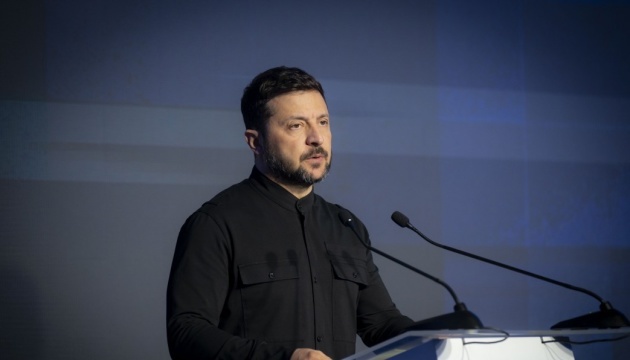
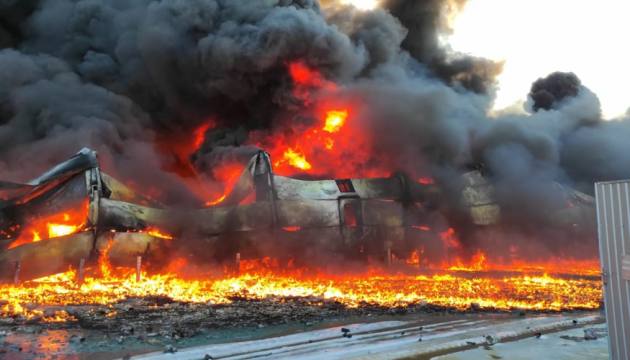
Around 7,000 children are to be taught drone skills by 2028, Lithuania’s defence minister said

© AP
WhatsApp has hit out against Russia’s actions to restrict usage of its encrypted messaging service

© Nick Ansell/PA
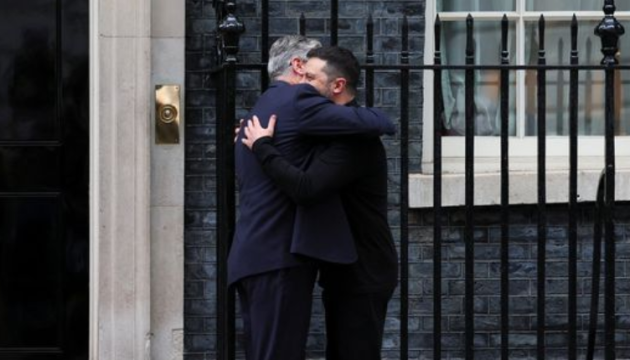
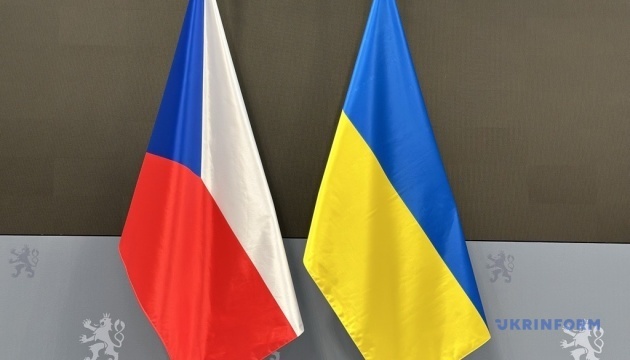
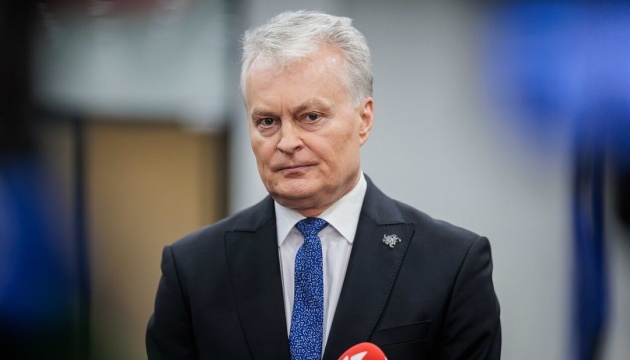

© Copyright 2025 The Associated Press. All rights reserved.
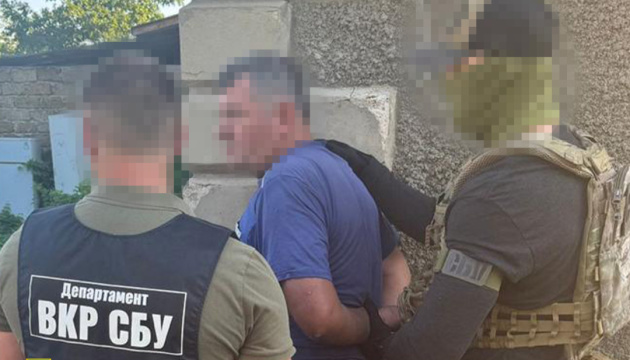
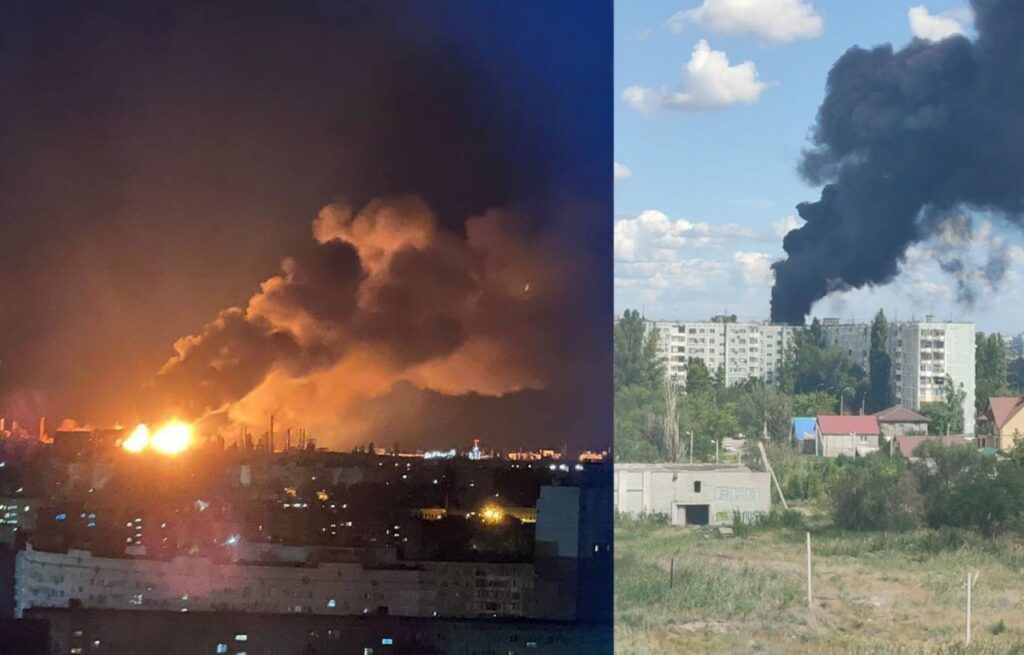
Ukraine’s long-range drone campaign has struck deep inside Russia again, igniting a massive fire at the Lukoil-Volgogradneftepererabotka refinery in Volgograd overnight on 14 August. The attack set off explosions, triggered a fuel spill, and forced the temporary closure of the city’s airport.
The Lukoil-Volgogradneftepererabotka plant is Russia’s largest petroleum producer in the Southern Federal District, with an annual capacity of 14.8 million tons. It is located roughly 500 km from the war zone.
Russian Telegram channels, including Astra, reported explosions and fires at the Lukoil facility in the early hours. Volgograd Oblast governor Andrei Bocharov claimed the region came under a massive drone attack. He alleged that falling debris from intercepted drones caused petroleum products to spill and ignite at the refinery. Bocharov said firefighting crews were deployed immediately and claimed there were no casualties.
Local accounts described several blasts before the blaze engulfed parts of the facility. Russian sources later confirmed that the refinery was the site of the attack. Authorities shut down Volgograd’s airport during the incident, citing safety concerns.
The Russian Ministry of Defense claimed its air defenses destroyed 44 Ukrainian drones overnight across Russia and Russian-occupied Crimea, including nine over Volgograd Oblast. It alleged that 14 drones were downed over the Black Sea, seven over Russian-occupied Crimea, seven over Rostov Oblast, four over Krasnodar Krai, two over Belgorod Oblast, and one over the Azov Sea.
This was not the first time the Volgograd refinery was targeted. Ukrainian drones reportedly struck the plant on 13 August, hitting the Krasnoarmeysky district where the facility is located. On 15 January, Russian media reported an explosion and subsequent fire at the refinery. In 2024, Ukrainian drones also attacked the plant twice — on 3 February and 11 May.

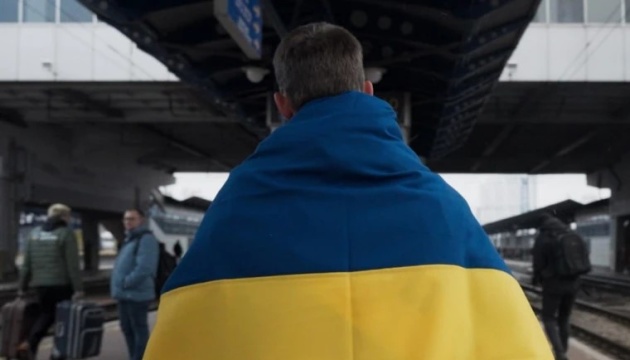
Trump suggests other European leaders could be invited to participate in a second meeting following Friday's summit in Alaska

© AFP/Getty
Sir Keir Starmer is to meet President Zelensky in No 10 after Donald Trump warned Russia of 'severe consequences' if it does not stop the war ahead of Friday's summit with Putin in Alaska

© AP
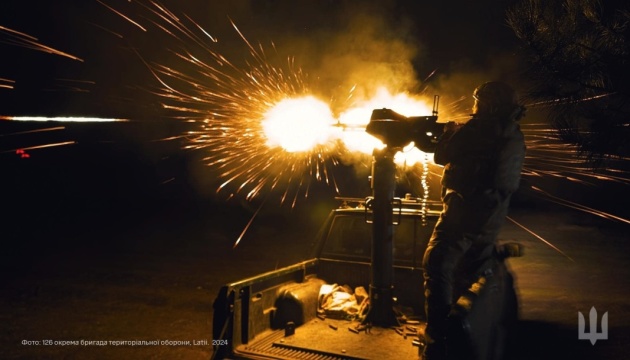

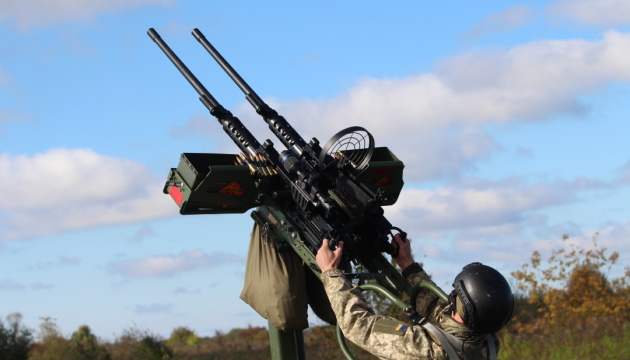
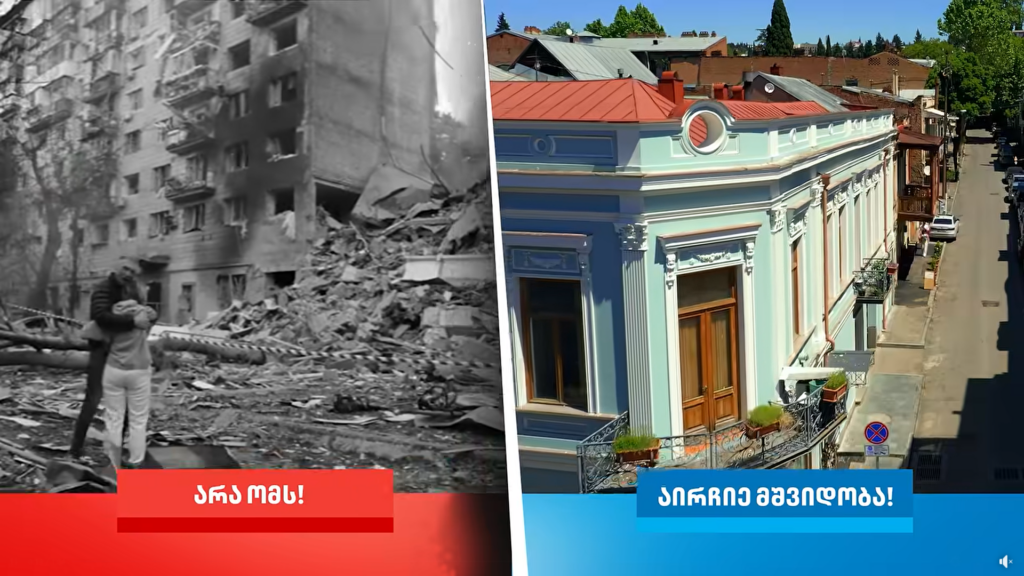
Georgia’s ruling party released new campaign material featuring cemetery footage of buried Ukrainian soldiers and bombed residential buildings, escalating its controversial practice of exploiting Russian war crimes for domestic political gain.
Georgian Dream’s central campaign message warns that supporting pro-European opposition would bring Ukrainian-style war to Georgia. The practice demonstrates how Russia’s invasion has become a tool in Georgian domestic politics, as the government exploits the conflict to shape voter behavior around Western integration versus accommodation with Moscow.
The Facebook video juxtaposes haunting black-and-white footage from Russian-bombed Ukrainian cities with colorful Georgian infrastructure. The campaign includes military cemeteries filled with Ukrainian defenders, destroyed residential towers, and grieving parents standing in rubble where their children died.
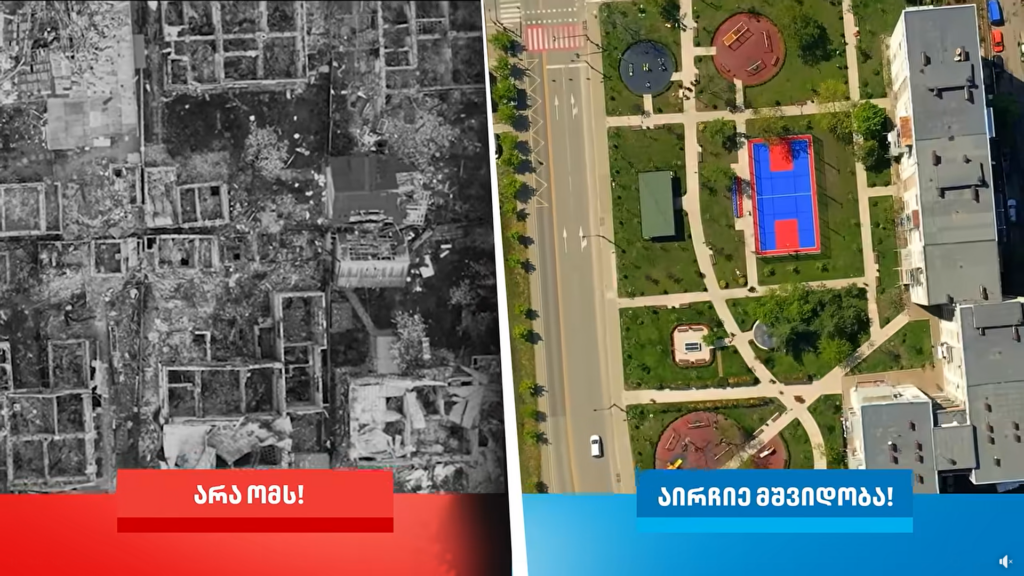
The Ukrainian footage (left) is captioned “no to war!”, while the Georgian side (right) reads “choose peace!”
Ukraine’s Ministry of Foreign Affairs condemned the materials as “yet another unfriendly act by the ruling party ‘Georgian Dream’ that for its own political PR purposes keeps using videos depicting the horrific consequences of the Russian full-scale aggression against Ukraine.”
“Such cynical actions demonstrate disrespect towards the Ukrainian people and the victims of the Russian aggression,” the statement continued, expressing “just indignation among Ukrainian society.”
This follows the party’s previous use of bombed Ukrainian theaters and churches in October 2024 election banners, which featured destroyed sites like Mariupol’s drama theater where hundreds of civilians died in targeted Russian airstrikes.
The ministry delivered particularly harsh criticism of Georgia’s broader trajectory under billionaire oligarch Bidzina Ivanishvili, who made his fortune in Russia and has steered the country away from Western integration.
“It is regrettable to observe how the Georgian authorities crawl before Moscow and disregard the principles of dignity and independence, which [are] historically inherent to the Georgian nation,” Ukraine’s Foreign Ministry stated.
The statement suggested Georgian Dream’s political technologists should “be honest with their own people and post a more truthful image on their pages: the Russian tricolor on the right and closed doors of the EU and NATO on the left.”
Since 2022, Georgian Dream has refused to sanction Russia, passed Moscow-style “foreign agents” legislation, and suspended EU integration talks until 2028 despite winning disputed elections in October 2024.
The party’s “fear of war” strategy exploits trauma from Russia’s 2008 invasion, which left 20% of Georgia under occupation.
International observers called Georgia’s October elections fraudulent, with statistical analysis suggesting the party stole 15% of votes cast. Mass protests have continued for over eight months, while the EU has effectively frozen Georgia’s membership path.
Despite government hostility, Ukraine emphasized its “consistent and unwavering support to the friendly Georgian people in their aspiration to build up an independent, democratic, and European state.”



